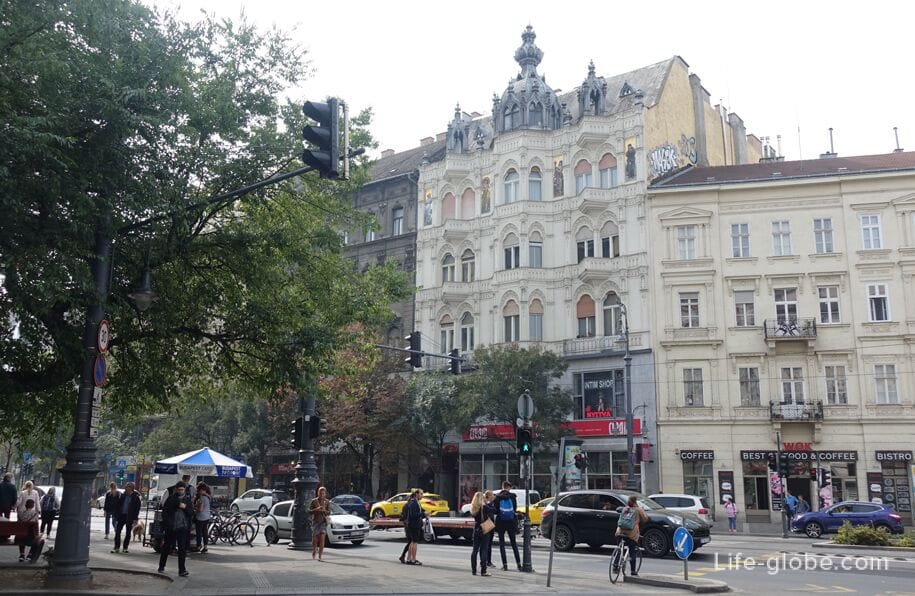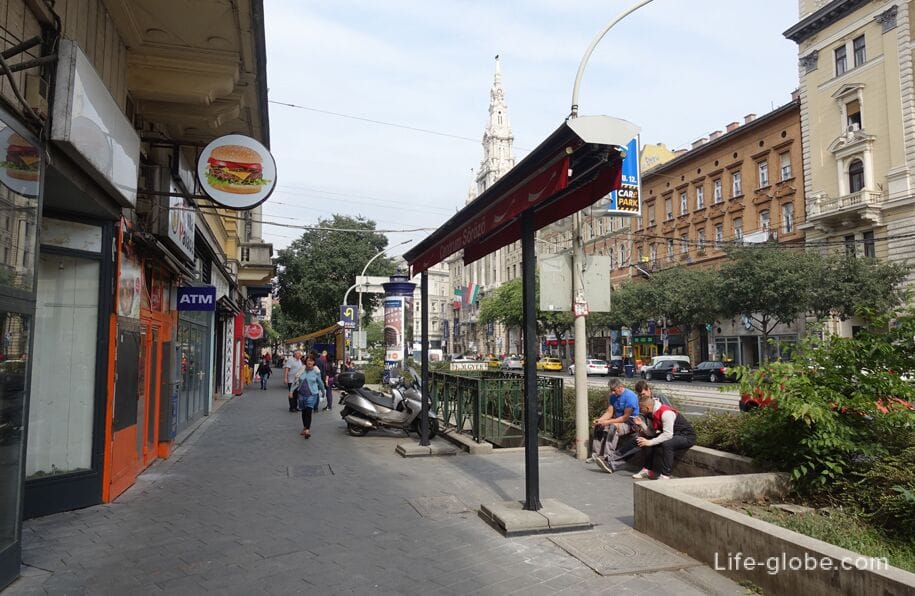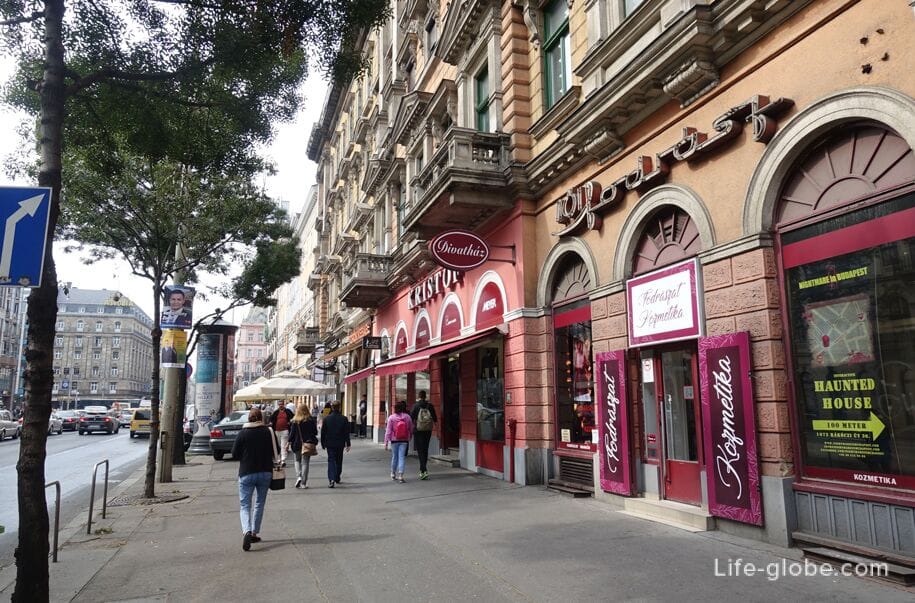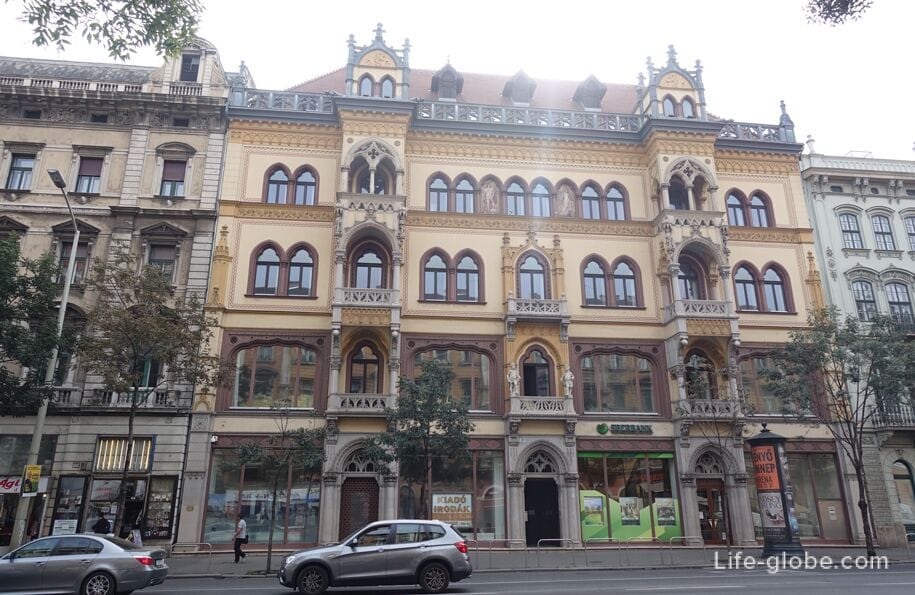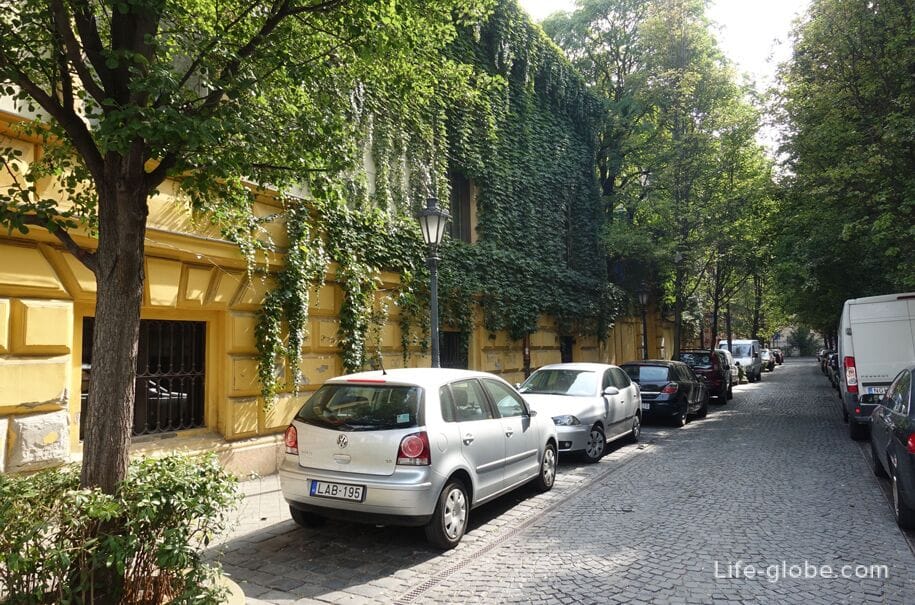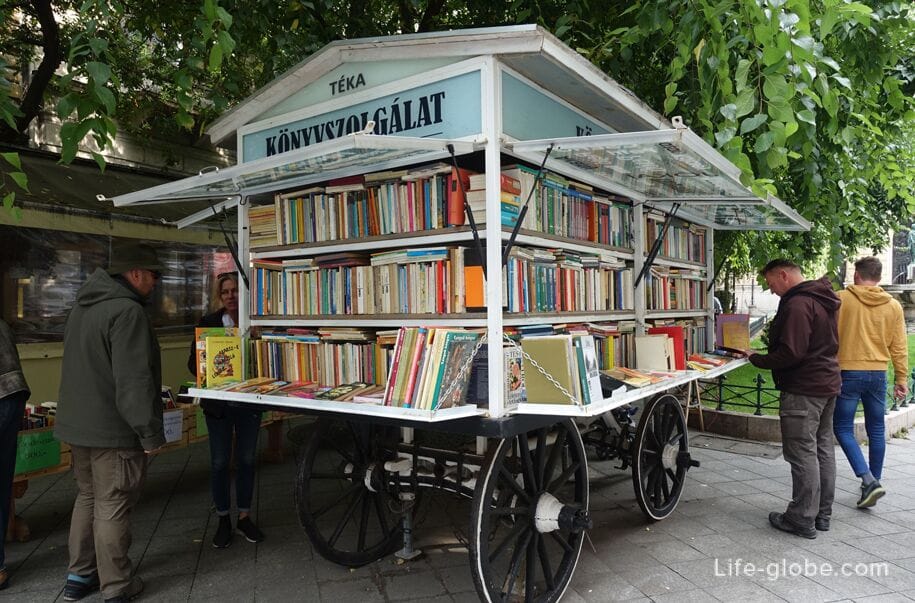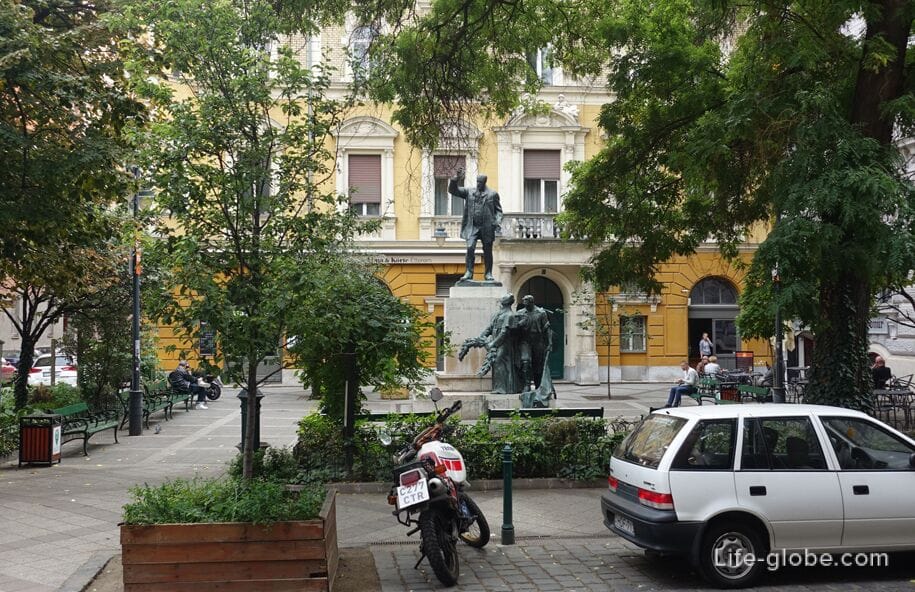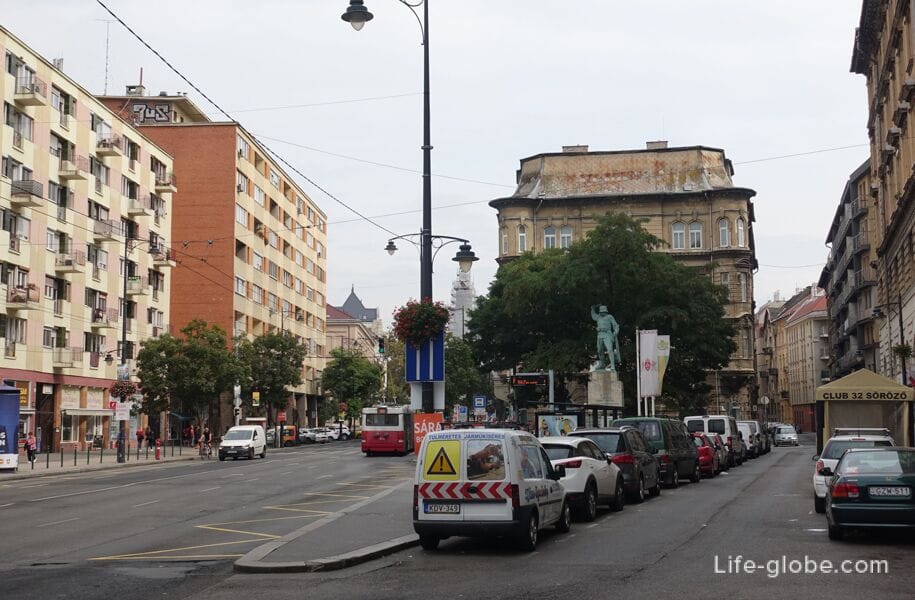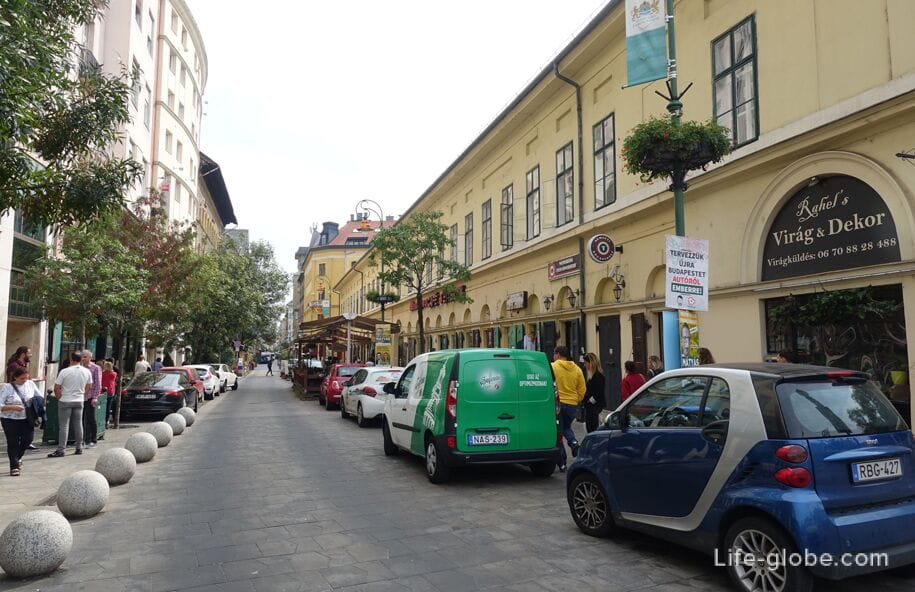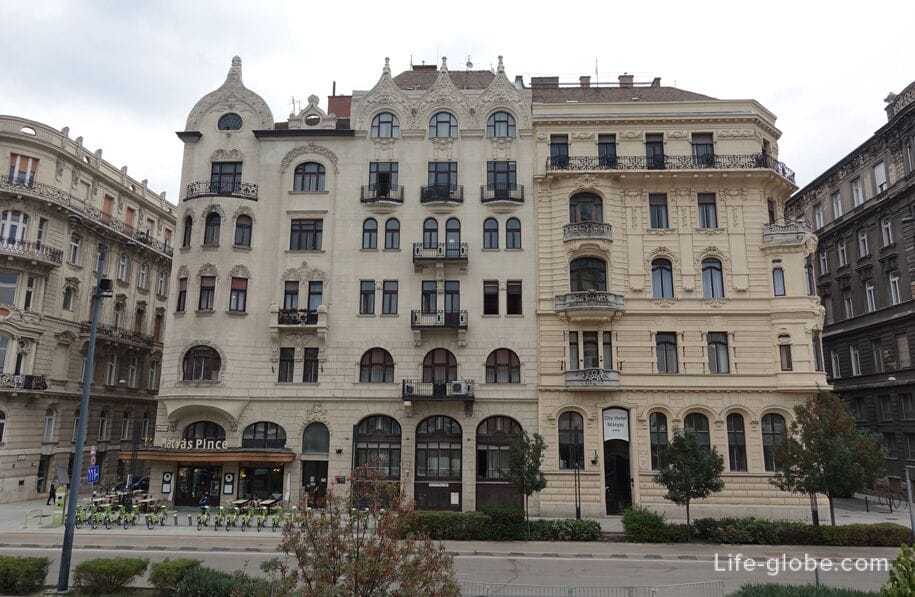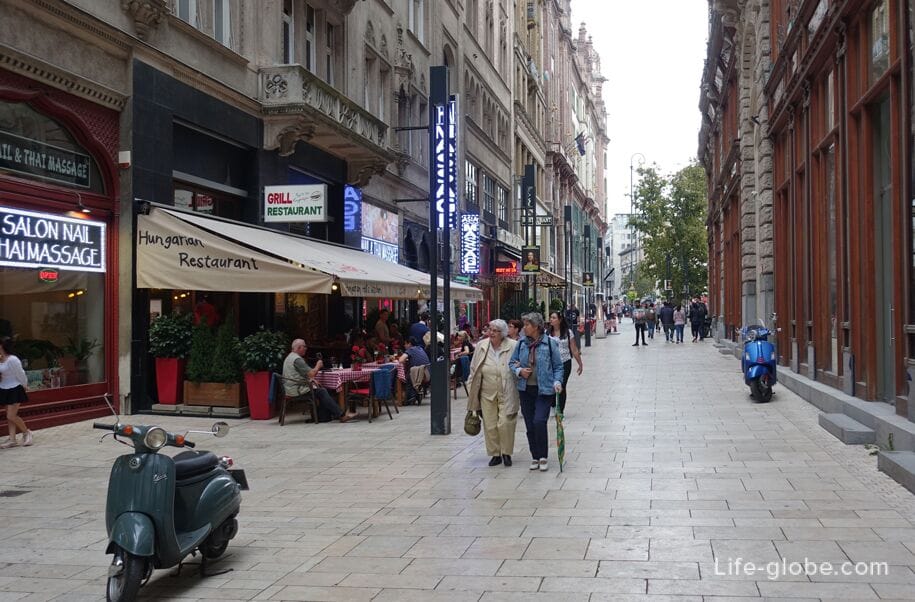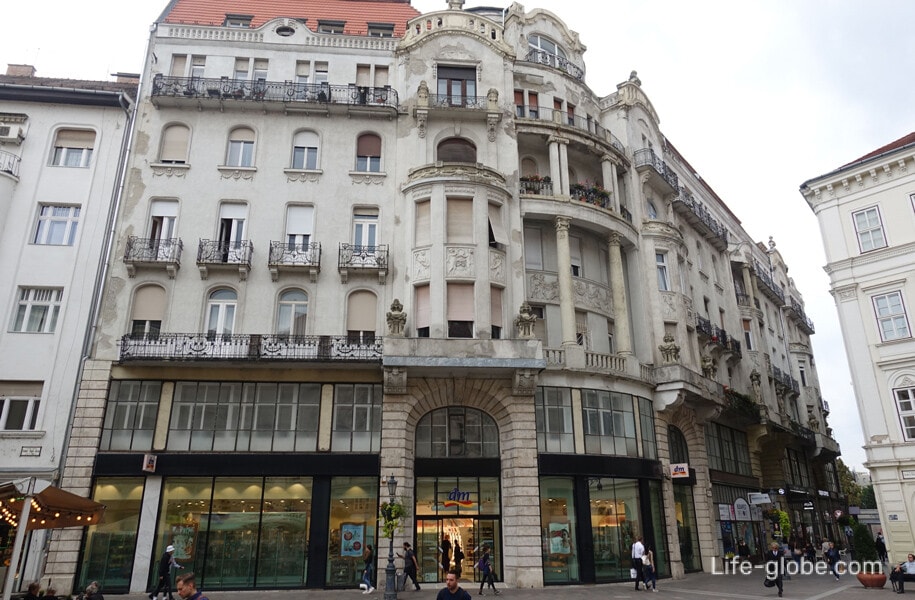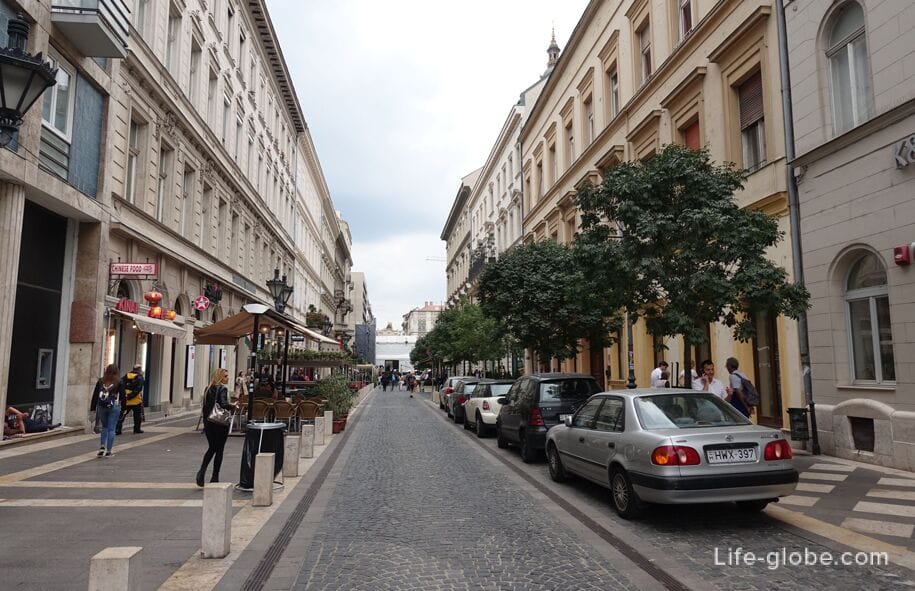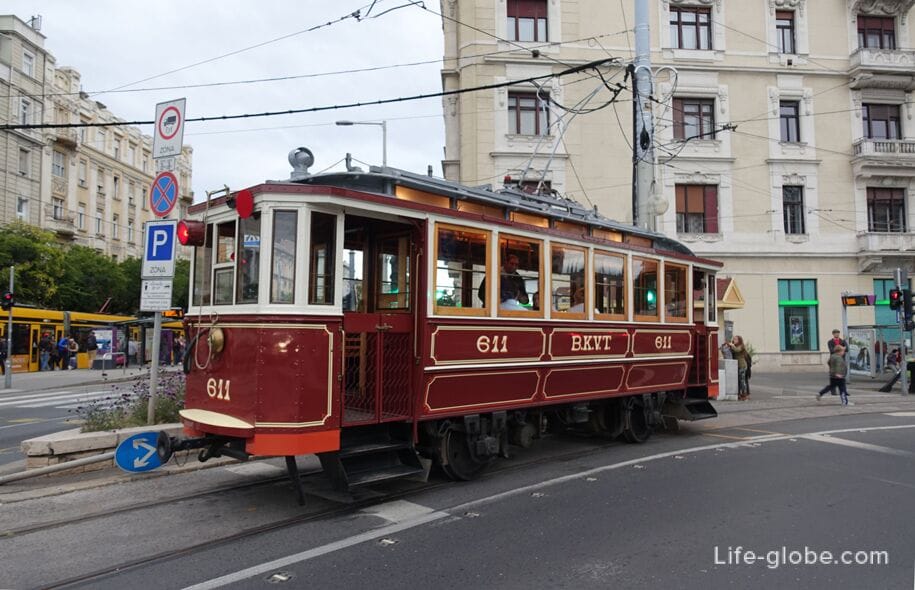
Pest is originally an ancient city located on the eastern side of the Danube, but since 1873, after the merger of three independent cities: Pest, Buda and Obuda, located on the western side of the Danube, it is part of the city of Budapest.
Pest, as a separate independent city mentioned in the writings Dating back to the year 1148. In the earlier centuries, its territory was the ancient Celtic and Roman settlements.
Although historical pest is a much smaller territory than now, but today to the area in a broader sense applies the name "pest", which refers to the entire Eastern part of Budapest. Sometimes in common parlance and communication between people, the word "pest" is used to refer to all the "Budapest" as abbreviated from the name "Budapest".
The area of pest is mostly flat and occupies 2/3 of the total area of modern Budapest.
It is on the pest side there are a greater number of significant attractions of the Hungarian capital, including parks, plazas, main streets, shops, museums, cafes, restaurants, pubs and markets. Also, the pest side is more developed in terms of transport, including public.
For this reason, many of the guests prefer to stay on the pest side. Buda or pest? - where to stay in Budapest...
Inner city "pest" (Inner City, the Hungarian name: Belvaros) - the so-called Central part of Budapest (city centre), which is more or less equivalent to the historical old town of pest.
The inner city of pest, mainly consists of 5 and 6 districts of Budapest, which are the most Central parts of the pest side. On the maps of the districts of Budapest is defined in Roman numerals: District V, District VI, etc.
In addition, not related to the historical Pest, but now also a tourist of Budapest are based 7th district and the Park Városliget. Partially 8 and 9 areas, but less visited because there are some important museums, for example: Hungarian national Museum, Museum of applied arts, Holocaust memorial center and the Hungarian Museum of natural Sciences.
The pest embankment runs along the entire pest from the East coast of the Danube river.
Across the Danube is spanned by bridges connecting the two parts of Budapest - pest, and I Will.
In the centre of Budapest, where the main touristic center and the main attractions of the city, over the Danube river are six bridges, each beautiful in its own way. For each of these bridges runs the transport, including both public and equipped with pedestrian areas on both sides of each bridge. Read more about the bridges and embankments of Budapest...
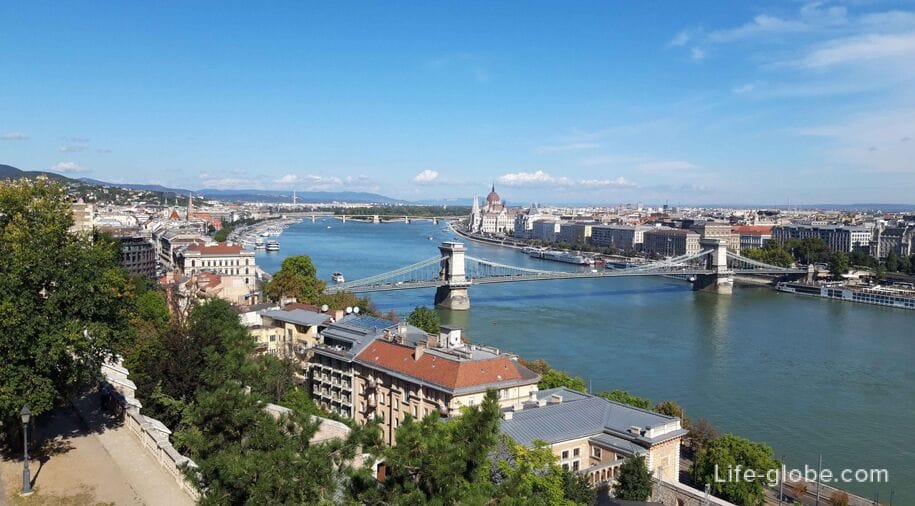
The Hungarian Parliament building (Orszaghaz - Orszaghaz) is among the most beautiful buildings of the parliaments of the world and the most beautiful buildings of Budapest.
The construction of the building was carried out in the period from 1885 to the years 1902-04.
The Western facade of the Hungarian Parliament building runs parallel to the Danube, and the other three (East, North and South) faces the Kossuth square.
In addition to the inspection of the facades of the houses of Parliament, perhaps visiting some of the internal spaces in the tour group. Read more about Hungarian Parliament building...
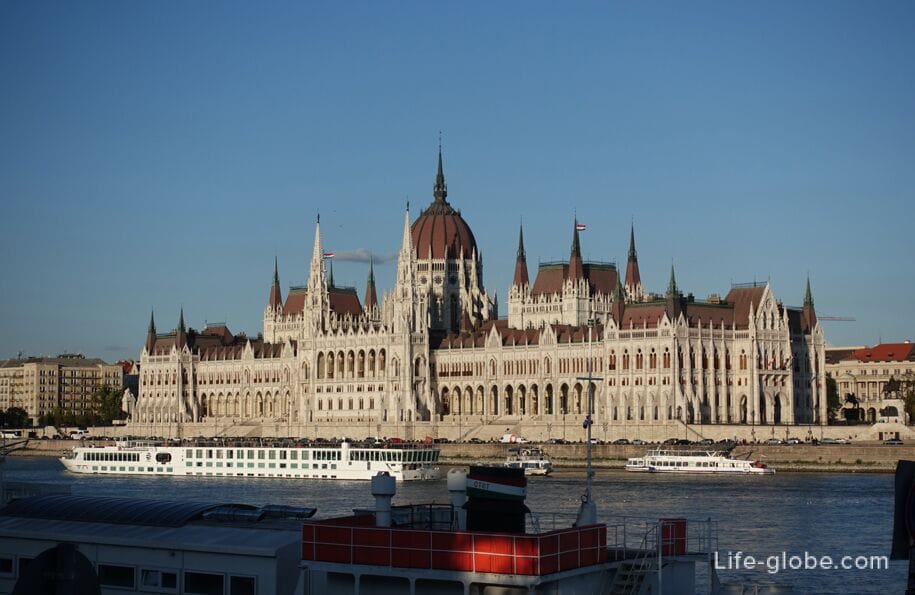
Area of Lajos Kossuth or just the Kossuth square (Kossuth Lajos ter) is one of the most famous and visited squares in Budapest.
In the square are historical buildings of Hungary, as well as memorials and monuments, including (in addition to the Parliament building), Palace of Justice, the building of the Ministry of agriculture, chocolate Museum and St. read More about Kossuth square...

Sculpture of "Shoes on the Danube promenade" is a memorial erected in memory of the victims of the Holocaust, initially consisting of 60 cast-iron Shoe sample shoes 1940-ies and is dedicated to the memory of those who were shot on the banks of the Danube by the Hungarian Nazis.
The memorial was opened in 2005 to mark the 60th anniversary of the Holocaust, and since then, he silently recalls the tragedy that Budapest will never forget. Read more about sculptural composition...
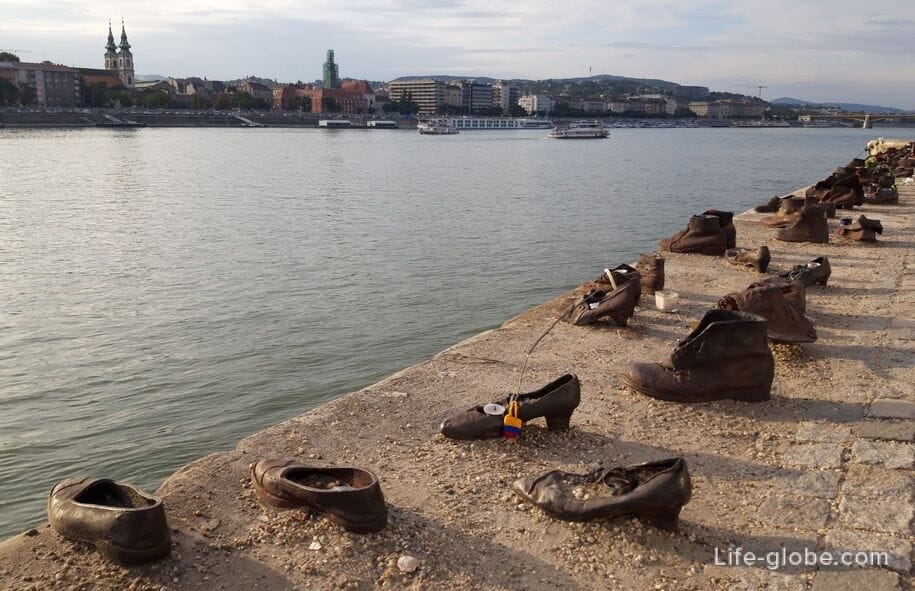
The Gresham Palace (Gresham-palota) is one of the most beautiful and recognizable buildings in Budapest.
The building of the Palace was built in the early 20th century in the art Nouveau style as an office-residential center for senior employees of Gresham.
Currently, the walls of the historic Gresham Palace is one of luxury Budapest hotels - 5-star Four Seasons Hotel Gresham Palace Budapest, many of the rooms overlooking the Danube river, scenic hill, Buda castle and the gellért hill on the Buda side. Read more about Gresham Palace in Budapest...
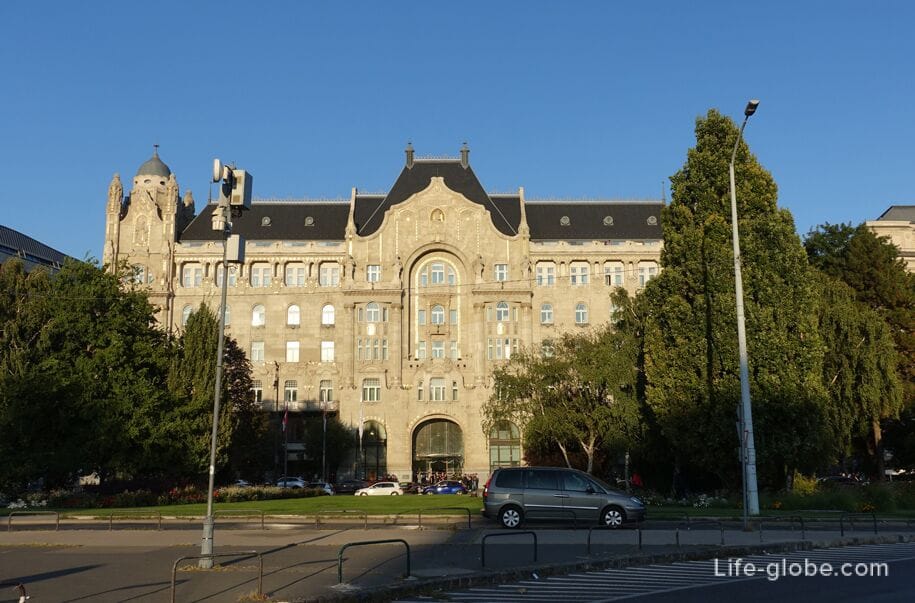
The Szechenyi Istvan square or just the square Szechenyi (Szechenyi Istvan ter) is named after count istván section is a very popular item among visitors to the city.
Through the area are many Hiking trails in Budapest.
On the square (apart from the Palace Gresham): the building of the Ministry of Internal Affairs, the building of the Hungarian Academy of Sciences, as well as sculptures, monuments, casino Las Vegas 5-star luxury hotel Sofitel Budapest Chain Bridge. Read more about széchenyi square...

Pesti Vigado, can also be known as Redoubt (Vigado, Pesti Vigado, Redoute), is the second largest concert hall in Budapest.
The building was erected in 1865.
In the walls of the Vigado, in addition to concerts and other events, there are also exhibition halls, a restaurant and café, there is a panoramic terrace on the 6th floor which offers views of the Danube, the Pest embankment and the old Buda side. Read more about Vigado...
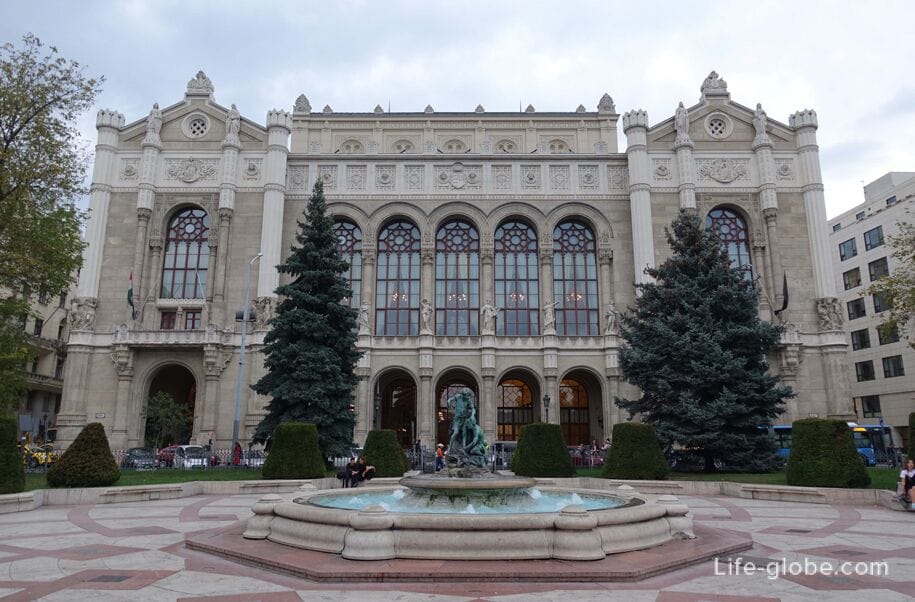
Freedom square (Szabadsag ter) - a public space - one of the main and biggest squares in Budapest.
Liberty square has a rectangular shape that is elongated in the direction North-South, and its center is a square with a fountain, Seating areas, pedestrian areas and children's Playground.
Also on the square are monuments and monuments, and around the perimeter of the towering historical buildings, including the monument to the Victims of the German occupation, the monument to the Soviet soldiers, the building of the Hungarian national Bank, the former home of the Budapest stock exchange and the U.S. Embassy. Read more about Liberty square...

The Basilica of St. Stephen, or St. Stephen's Basilica (Szent Istvan-bazilika) is a Roman Catholic Basilica (Church), is the most important Church building in Hungary, which is one of the most beautiful, important spiritual and tourist attractions of the country.
The Basilica is built in the neoclassical architectural style. In terms of an equilateral cross. The main facade of the Basilica overlooks the homonymous square, St. Stephen (Szent Istvan ter 1), where concerts, festivals and other public events.
On the dome of the Basilica there is a circular open area, giving a 360° view of Budapest. Read more about Basilica of St. Stephen...

To the area and the main facade of the Basilica of St. Stephen is street Zrinyi (Zrinyi u), which is a street in the tourist centre of Budapest, along which there are cafes and restaurants, and is a sculpture of Tolstoy policeman (The Fat Policeman Statue).


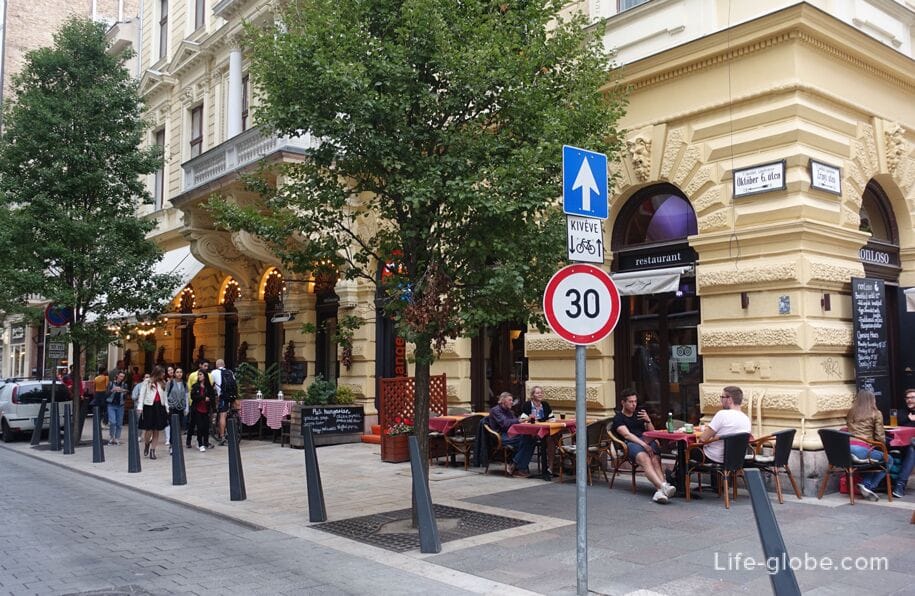
The area of Elizabeth or Erzsebet square (Erzsebet ter) is one of the most visited areas of pest.
The center of the square forms a square with a fountain Danubius (Danubius-kút), the largest green area in the historic pest.
Also on the square are cafes, places to stay and the Ferris wheel, one of the lookouts in Budapest.

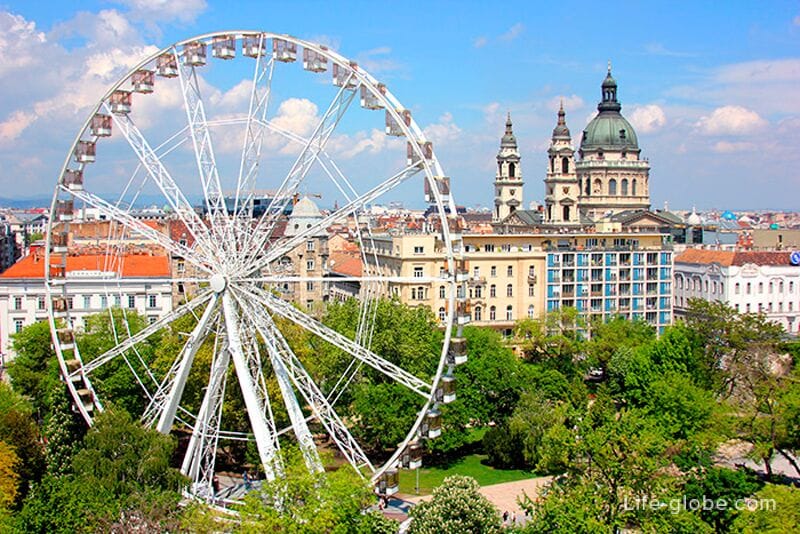
The deák Ferenc square (Deak Ferenc ter) is a major transportation hub of Budapest, near the square is a bus and tram stop, and under the square are lines M1, M2 and M3.
The area was developed in the early 19th century.
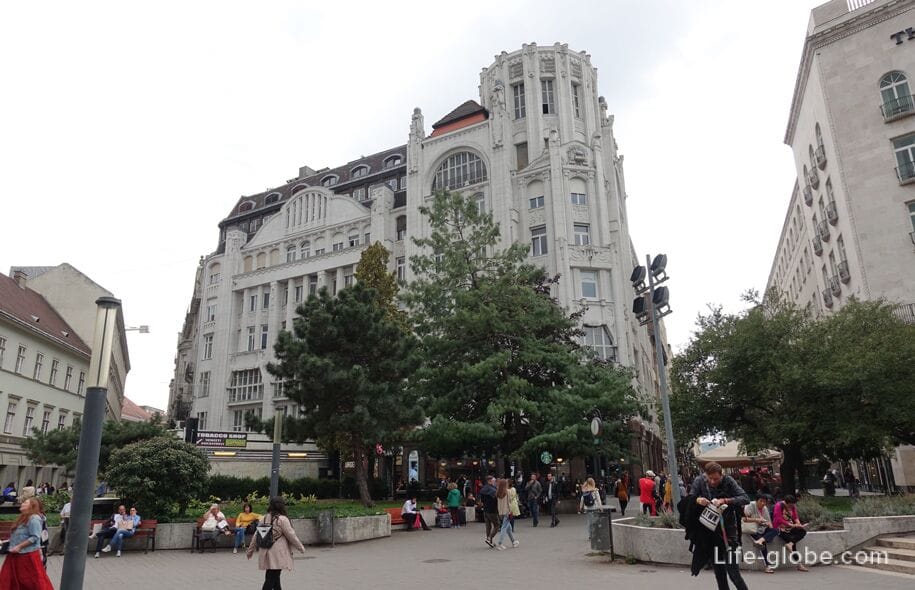
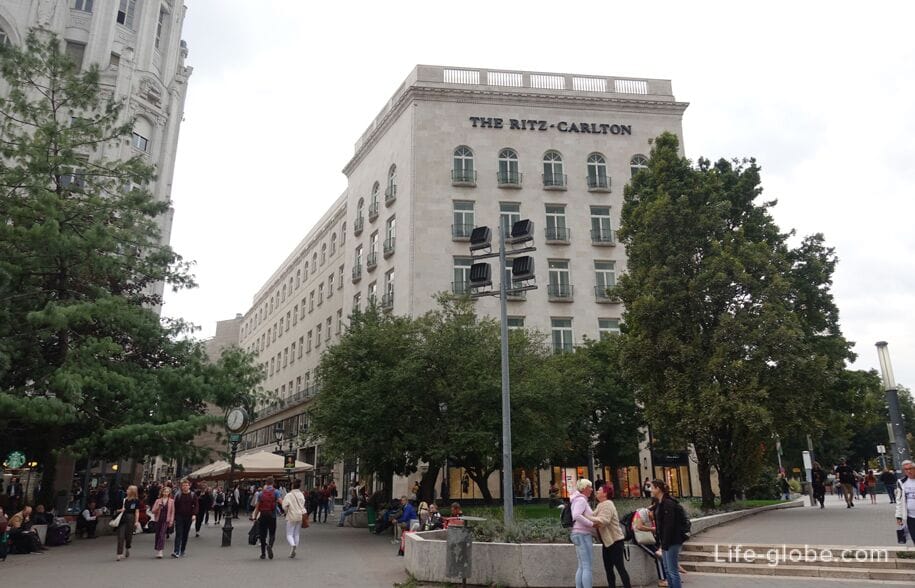
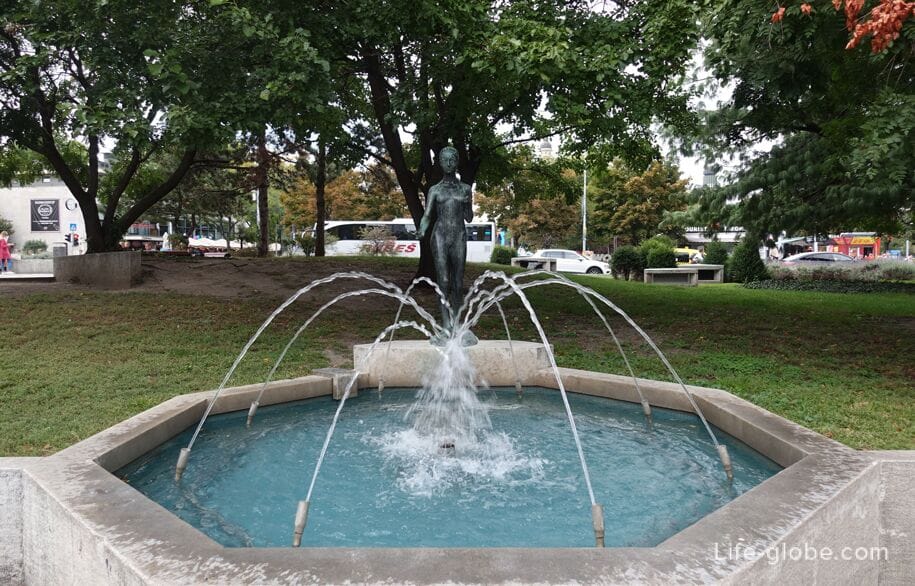
The square is notable for the Lutheran Church called the Lutheran Church at Deak square (Deak teri evangelikus templom) and the oldest and most well-known Evangelical Church.
It is the largest Protestant Church in Budapest. The Church was built Michigam Pollack in 1799 - 1808.
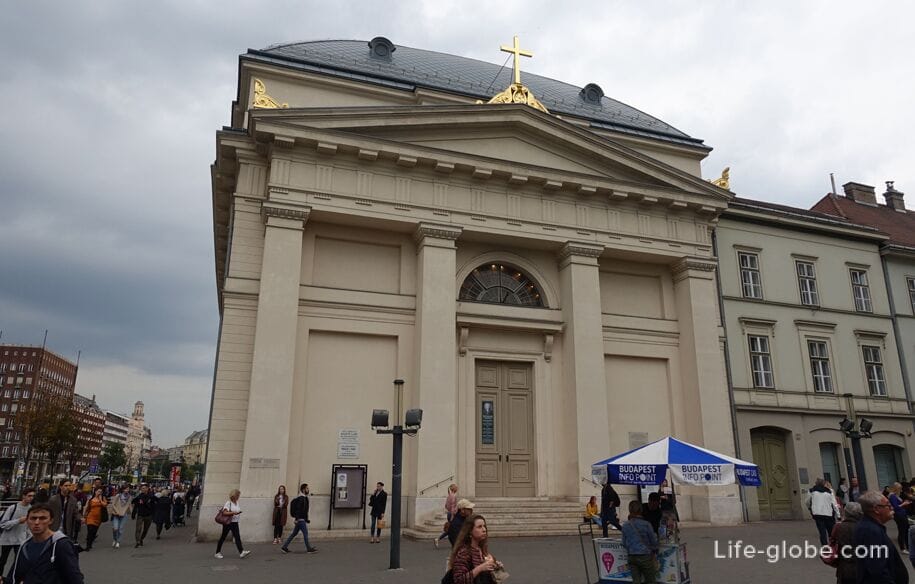
Across the street from the square, at the following address: Anker köz 3 is a beautiful and conspicuous Palace of Anker (Anker Palace / Anker-palota) was built according to the project of ignác Alpar in 1908 in an eclectic style for the Vienna insurance companies Anker Life and Pension.
The building was completed in 1910. On the facade of the Palace are the Doric columns and two statues of women with outstretched hands placed on the roof.
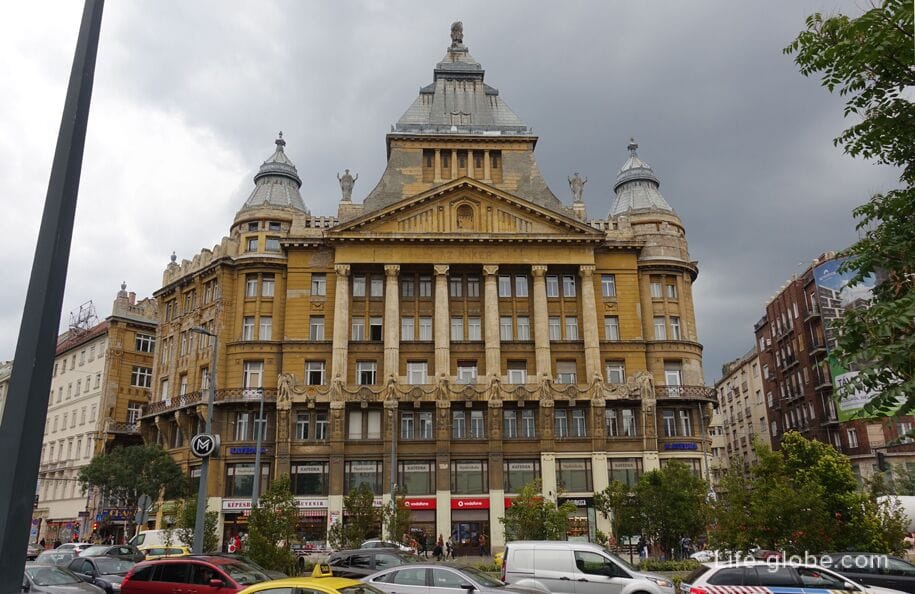
The Roman Catholic St Anne's Church (Belvarosi Szent Anna templom) was built between 1725 and 1732 years together with the monastery (to the present day is not preserved) on the site of a former Turkish mosque in Baroque style (late Baroque) and is considered by many to be one of the most beautiful, richly decorated churches in Budapest.
Near the Church is a tall column dedicated to the Saint. The Church is the main decoration of the square of Easements and located within office and retail buildings at the address: Szervita ter 6.
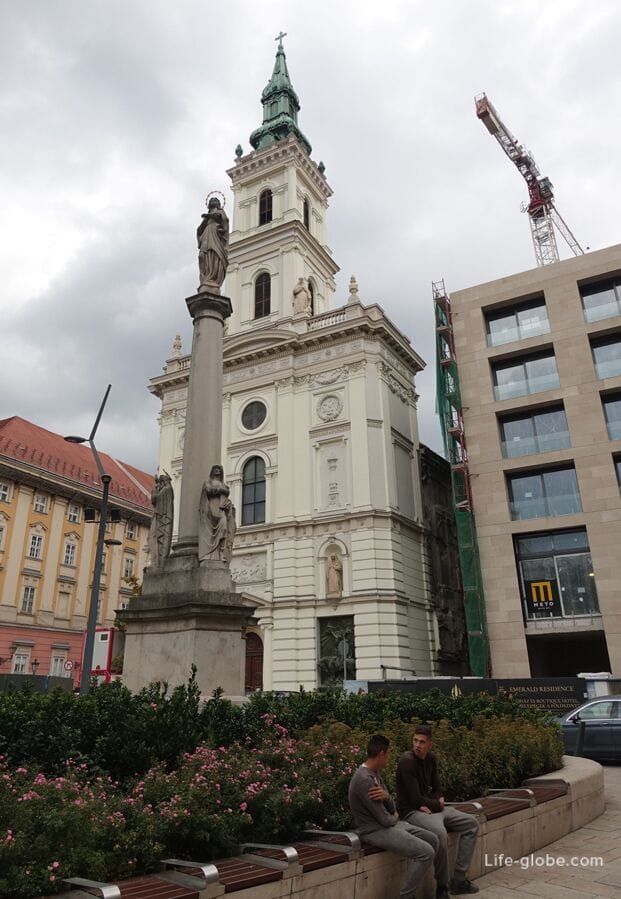
Square, square Jozsef Nador (Palatine, Jozsef nador ter / Jozsef nador square) is a popular, although located in the historic centre of pest.
In the middle ages the territory of present square was outside of pest, and was built on the ruins of Roman fortifications and surrounded by city walls in the 12th century.
The square is notable for the statue in behalf of the Palatine józsef and graceful sculptural fountain.

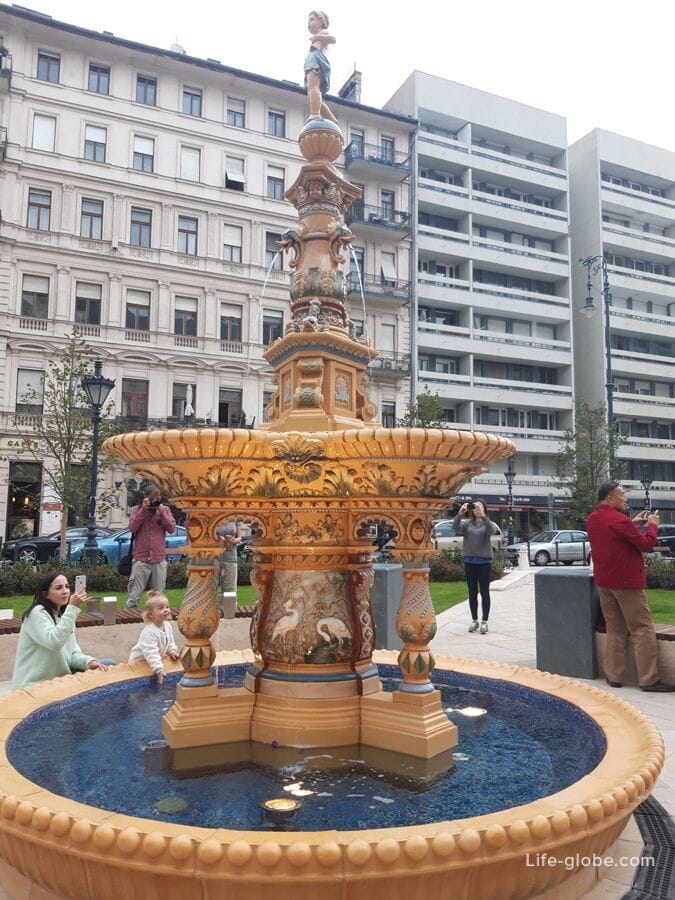
The perimeter of the square is decorated with historic buildings, including:
- home Kovacs-Sebastien, built in 1859 for Endre Kovacs-Sebastien, the famous surgeon at St. Roja. Built in romantic style in 1922, the original building had fewer floors, however, with the completion, has acquired miesni look.
Home address: area of józsef 5-6;
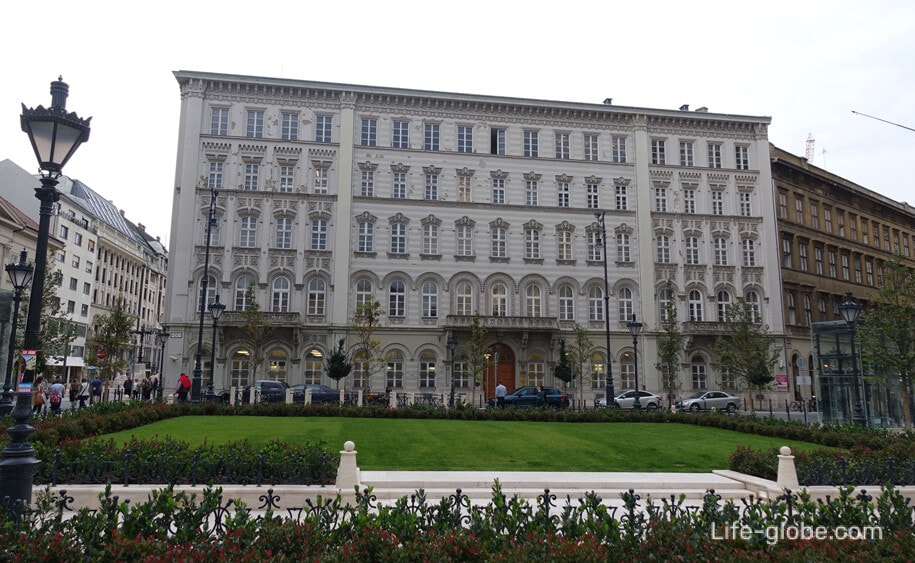
historical building of the Ministry of economy (area of józsef 2-4);

- the house is gross, built in 1824 under the plan józsef Hilda-order-Ferenc Grosz. This is a typical low rise residential building with a classical portico, is one of the most common facade systems that time. In addition to a number of minor internal changes, the house remained in its original condition until the 20th century, after which its first floor was gradually transformed. Original tiles and arches, some of its pillars and wooden doors have been expanded, removed and rebuilt.
Home address: area of józsef 1;
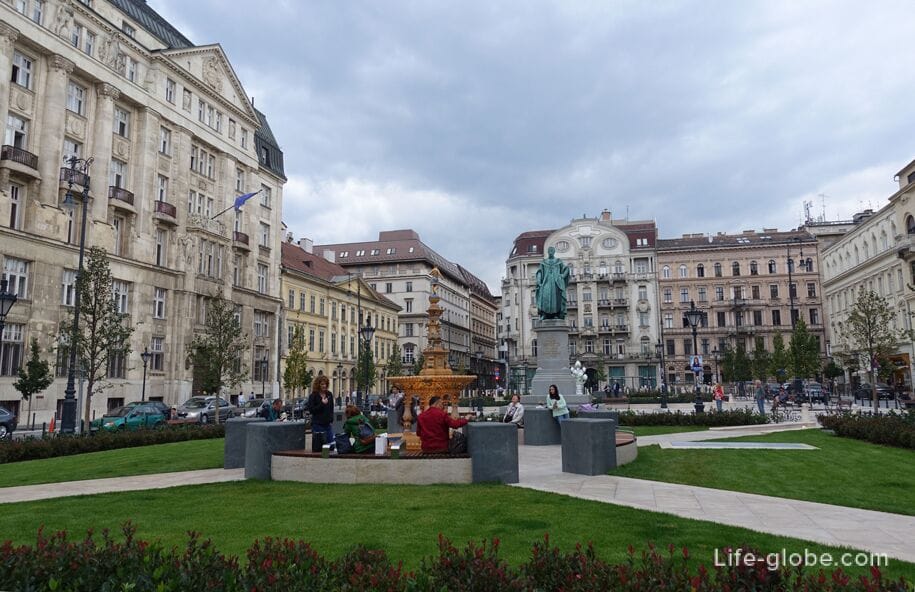
- more modern buildings built in the 1800's- 1900's, both residential and(or) commercial.

Vaci street (Vaci utca) is one of the major tourist attractions and shopping streets of Budapest.
Stretches the váci street parallel to the embankment of the pest side, from the square Pevam (Fővam ter), which is near the Central market of Budapest (near the Liberty bridge) to the vörösmarty square (Vörösmarty ter).
Currently, the váci street is a pedestrian artery of the city, as a lateral (adjacent) street.
The street is just over a kilometer. Along the street are located buildings, some of which are of historical value, the part attracted to their facades decorated with tiles and decor.
On the first floors of buildings along Vaci street there are cafes, restaurants and eateries with outdoor Seating, shops, souvenir shops and boutiques. Read more about Vaci street...

Verasmart square (Vörösmarty ter), which leads to the váci street, was named after the Hungarian poet and writer mihály vörösmarty (1800-1855) was in 1926.
A monument of Carrara marble, dedicated to Verasmart adorns the center of the square.
Also on the square of Verasmart is the lion fountain or fountain Leon (Oroszlanos kut), built in 1985 on the site of the well and decorated with stone statues of four lions and the iron lamppost, which dates from an earlier period.
Of the buildings around the square especially remarkable house gerbo (Gerbeaud-haz), built in 1858-1862 and which is a building in art Nouveau style. Currently, the first floor is the famous Cafe "Garbo" (Cafe Gerbeaud) - one of the biggest and best-known coffee-house in Europe. Read more about square Vörösmarty...
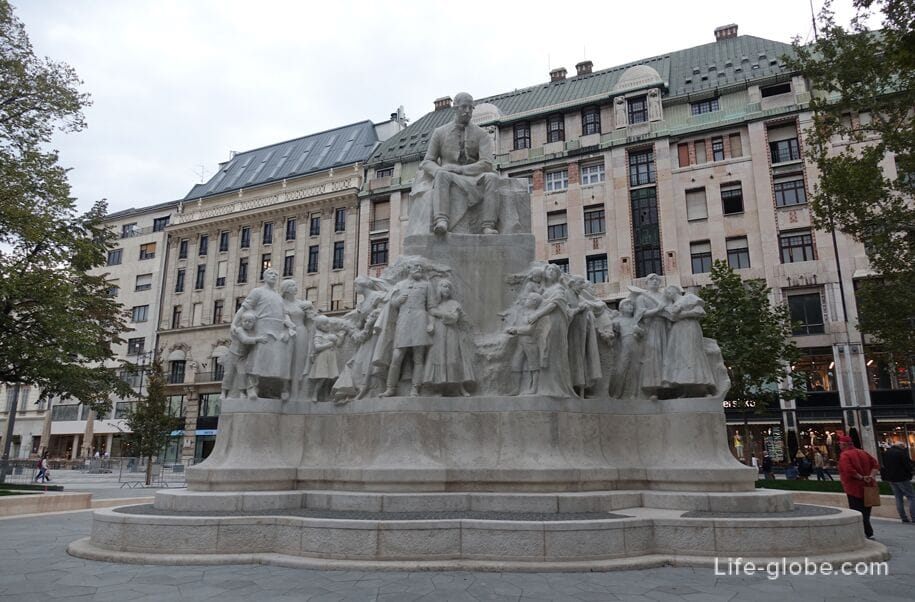
The Central market in Budapest, also known as the Great market hall / Central market hall or just a Large hall (Központi Vasarcsarnok / Nagy Vasarcsarnok / Fővam teri központi vasarcsarnok) - the largest indoor market of Budapest.
The market was built in 1896 and opened in 1897.
The inner part of the Central market of Budapest is a large shopping hall on the ground floor.
On the second floor of metal structures to sell food products, but also a public catering area, attracting a large number of visitors. Read more about the Central market...

Franciscan also Francecca area or the area of Fereneze (Ferenciek tere) and the Church on the square, which is its centerpiece, was built between 1250 and 1260 years.
The original Gothic Church was small, so the Franciscan fathers began to build a new Church in 1727. The Baroque Church, preserved to our days, was consecrated on 21 September 1743.

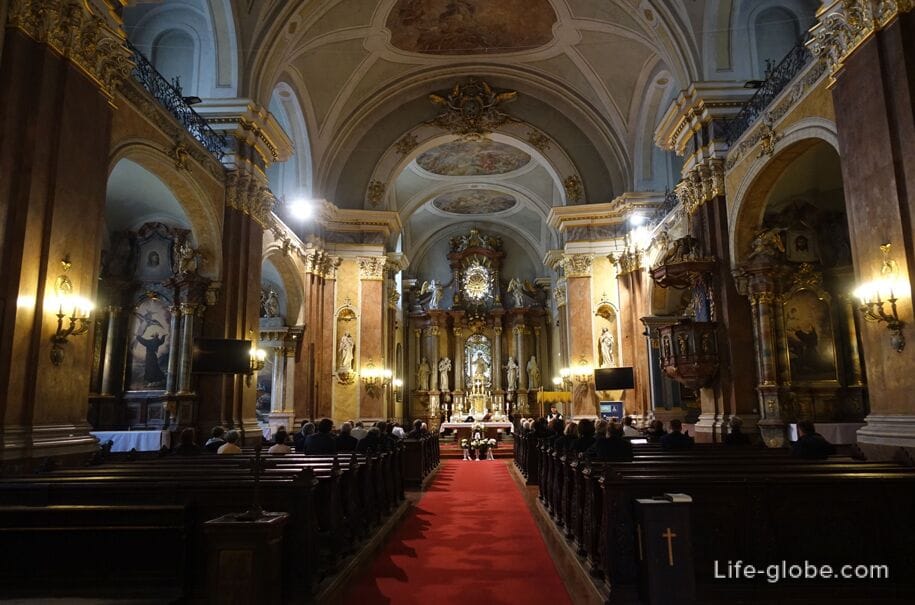
In front of the Church is a monument to "the well of the Spirits" (Nereidak Kutja).

Square elongated cafés and restaurants, is also noteworthy:
- the neo-Renaissance building of the University library (Egyetemi Könyvtar), opened in 1876 and is one of the largest libraries in Budapest and holds within its walls one of the oldest collections of books in Hungary, which is older than the University itself;

historical building, referred to as the "Paris courtyard" (Moulin-Rouge), which originally served as the headquarters of the Central savings Bank and built in 1817 by Baron józsef plan mikhayla Pollack. This building was one of the first modern office buildings in Hungary.
The courtyard on the ground floor is a Parisian court, which, in turn, is the only remaining yard of its kind in Budapest in the early 20th century.
Currently, the walls of the building are: a café and restaurant, a business centre and 5 star hotel Parisi Udvar Hotel Budapest. Address: Ferenciek tere 10.
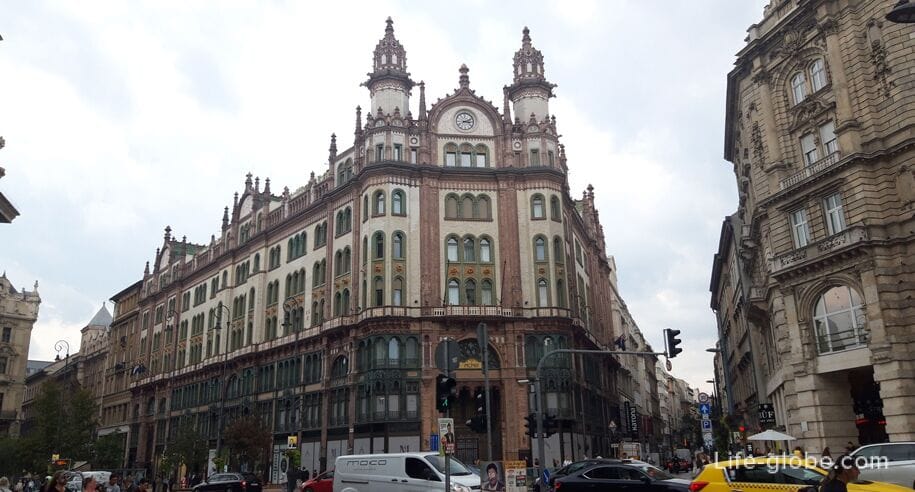
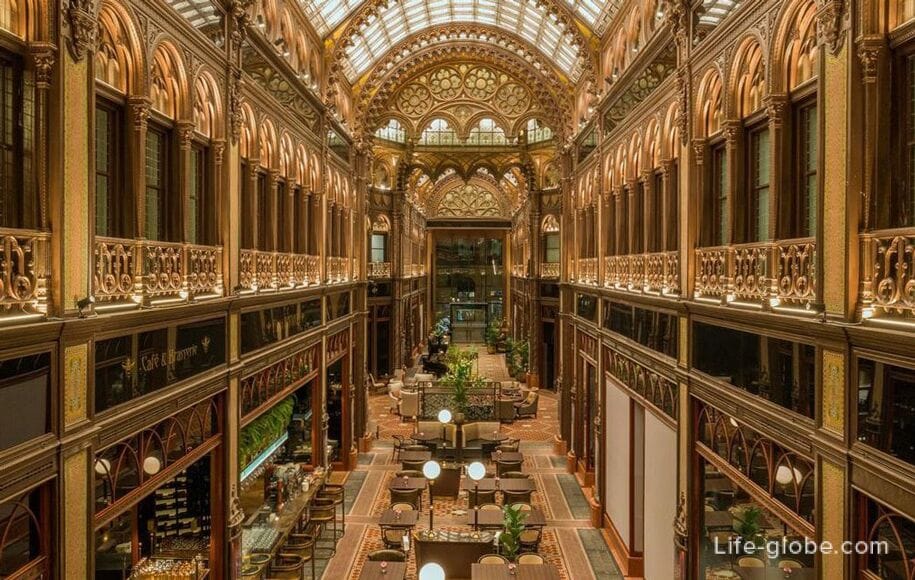
Photo Franciscan square
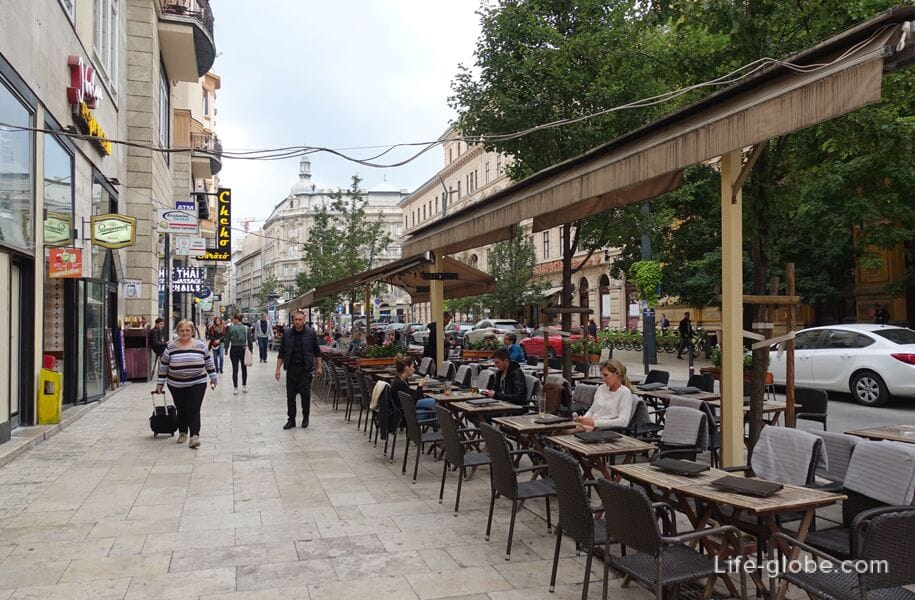
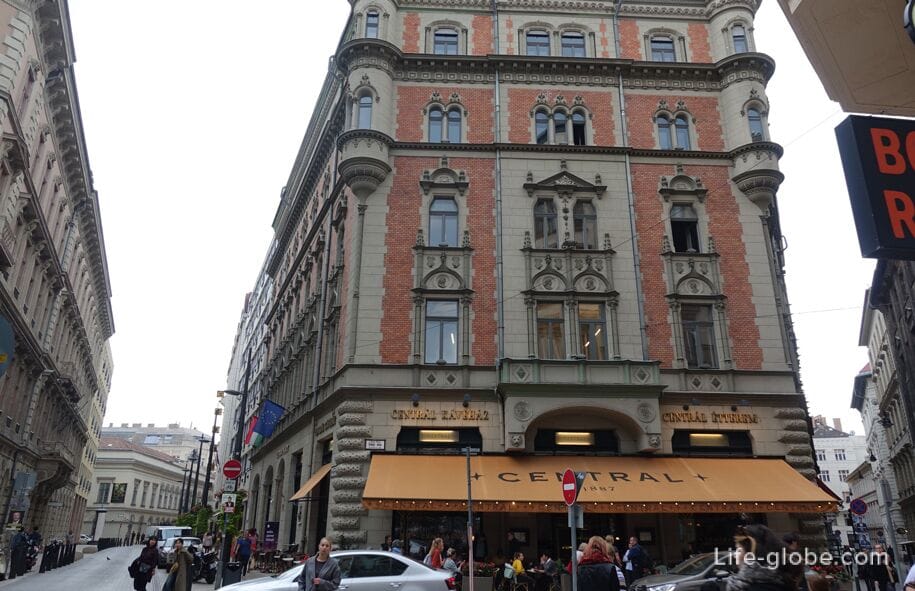
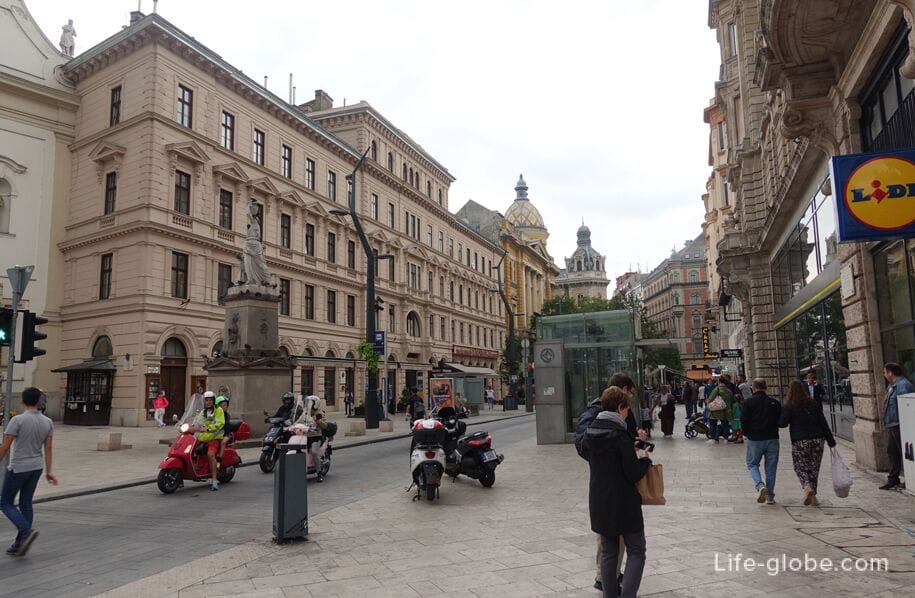
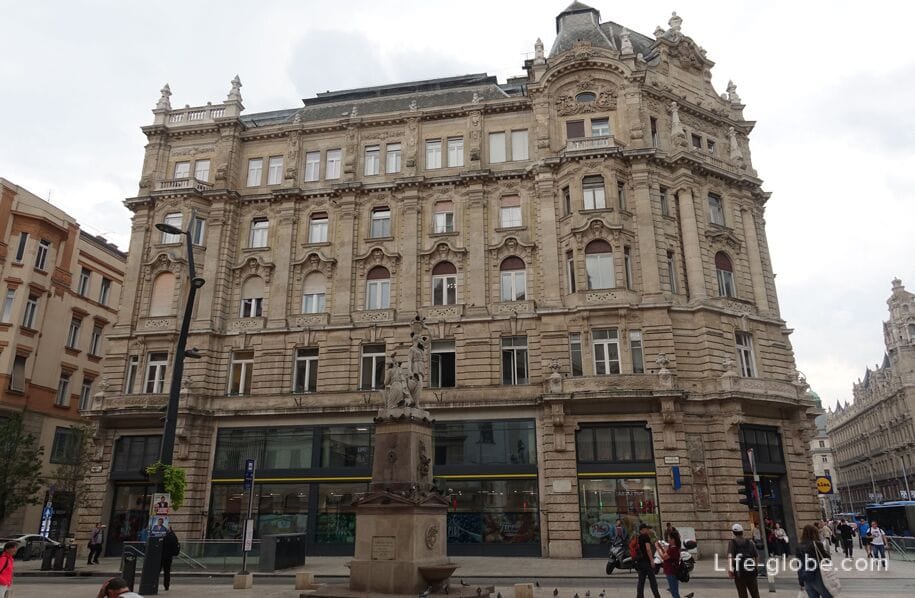
With Franciscan square are clearly visible palaces Clotilde (Klotild palotak), representing two large typical British (neo-Baroque and eclecticism) buildings that are near each other - a mirror opposite buildings separated by a street make contact Lajos (Kossuth Lajos u).
The palaces form a symbolic gate leading to the Erzsebet bridge.
At the turn of the Millennium on the initiative of the Duchess Clotilde (wife of Archduke Joseph Karl of the Austrian) has been declared the tender for the construction of new buildings. The house was built between 1899 and 1902 years. The iron structure of the twin buildings were covered with carved stone. Towers with a height of 48 meters was decorated with an enlarged copy of the crown of the Archduke. In buildings lifts have been installed - the first in Budapest.
On the ground floor of buildings there are cafes, shops, galleries, offices and upstairs apartments.
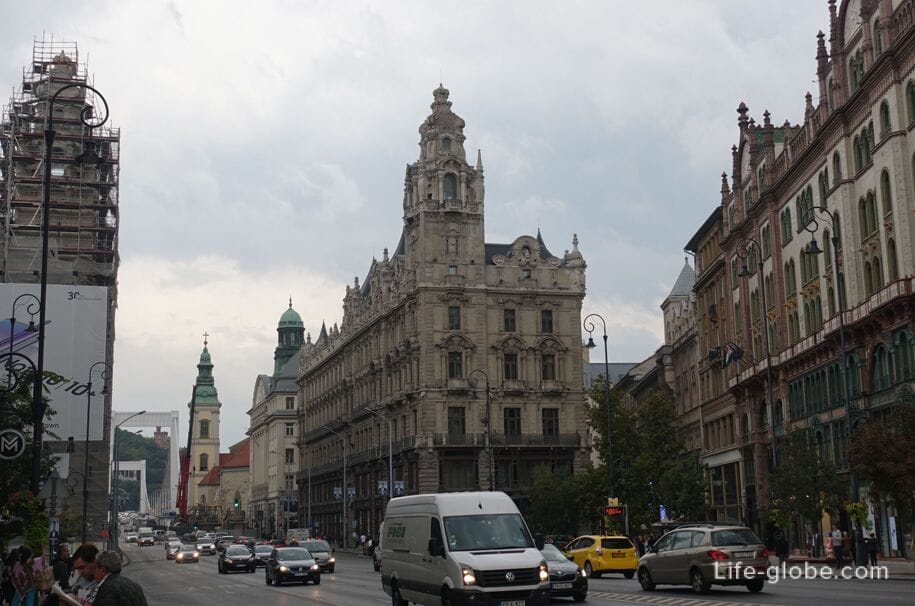
The Museum-gallery Petofi (Petofi Museum of Literature) with the permanent and temporary exhibitions is located at Károlyi utca 16.
The website of the Museum: pim.
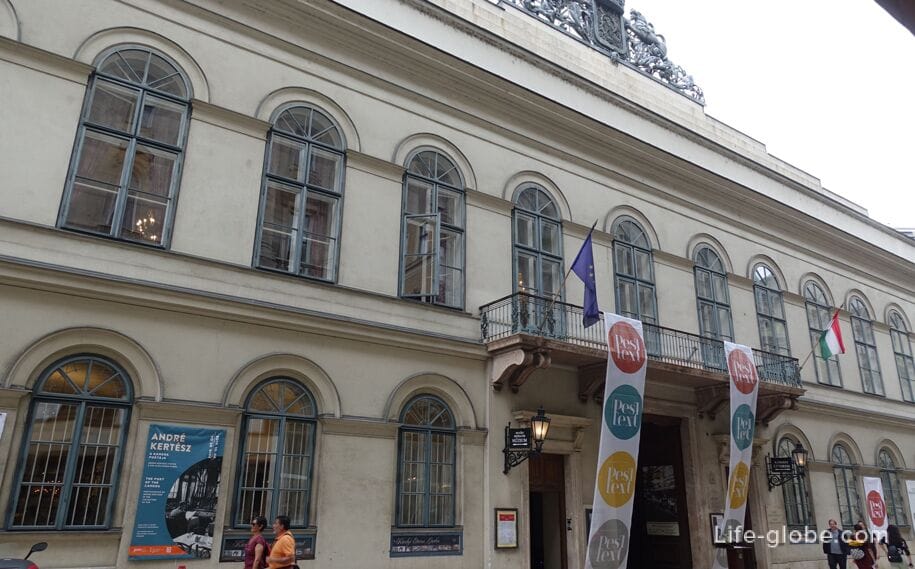
The fountain "Book," or fountain "Open book" - not the most popular attraction of Budapest. The size of the small fountain, and it is not in the visited place.
However, this fountain is impressive - there is something fascinating, graceful.
Fountain the Book substitutes a marble fountain in the form of a large open in the middle of the book, from cover every few seconds, rise up jets of water, creating the illusion of turning invisible pages.
The location of the fountain "Book" has a symbolic significance. The fountain is located opposite the main facade of the University Eotvos Lorand eötvös University and the Church. Read more about the fountain Book + video of the fountain...
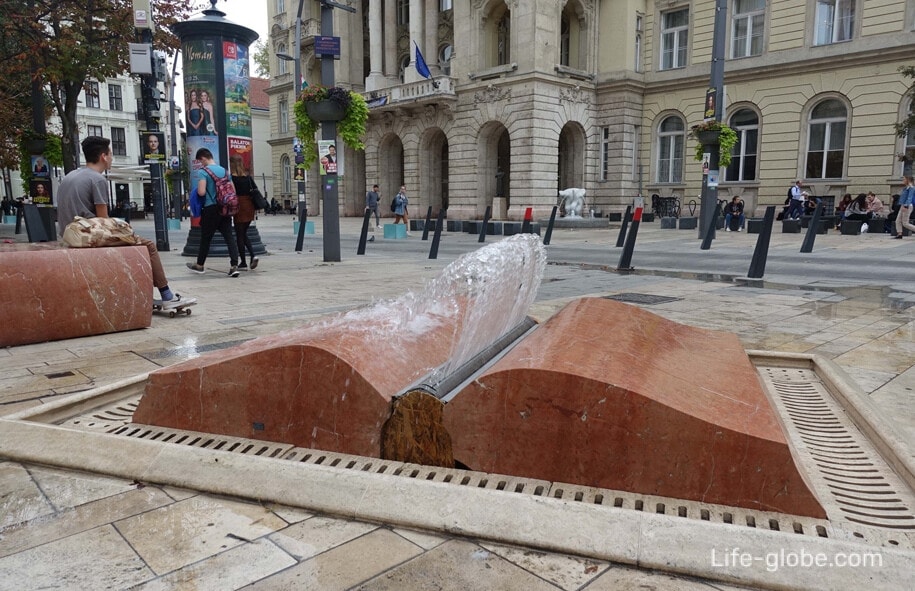
The Jewish quarter in Budapest is located in the inner half of the heart of Erzsébetváros district / Erzsebetvaros (near street karolyi / Karoly krt), which is one of the Central and most populous district of pest.
In the Jewish quarter and the heart of Erzsébetváros district as a whole concentrated a considerable number of attractions, including the Great synagogue or the synagogue on Dohany street (Nagy Zsinagoga / Dohany utcai Zsinagoga), the largest functioning synagogue in Europe and the ruins bars (ruin pubs), iconic attractions of the city.

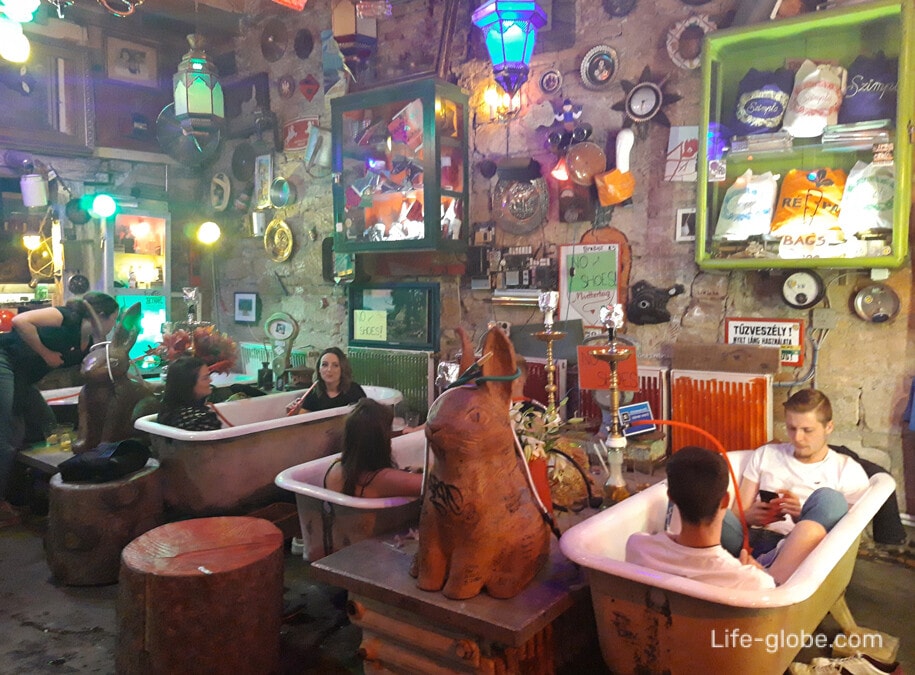
New York Palace hotel (New York Palace), also known as the new York Palace Budapest - the eclectic building was built between 1892 and 1894 for the Hungarian head office of the new York company of life insurance in which the historical Greek, Latin, Renaissance and Baroque styles are mixed in typically the creative structure of art Nouveau.
Its current highlight, the building was purchased after a complete restoration, opening the door 5 may 2006 as a luxury hotel and famous cafe on the ground floor.
Now on the first floor of the building is the legendary café new York (New York Cafe), and in the building is a luxurious 5-star hotel Dedica Anthology, Autograph Collection. Read more about new York Palace...
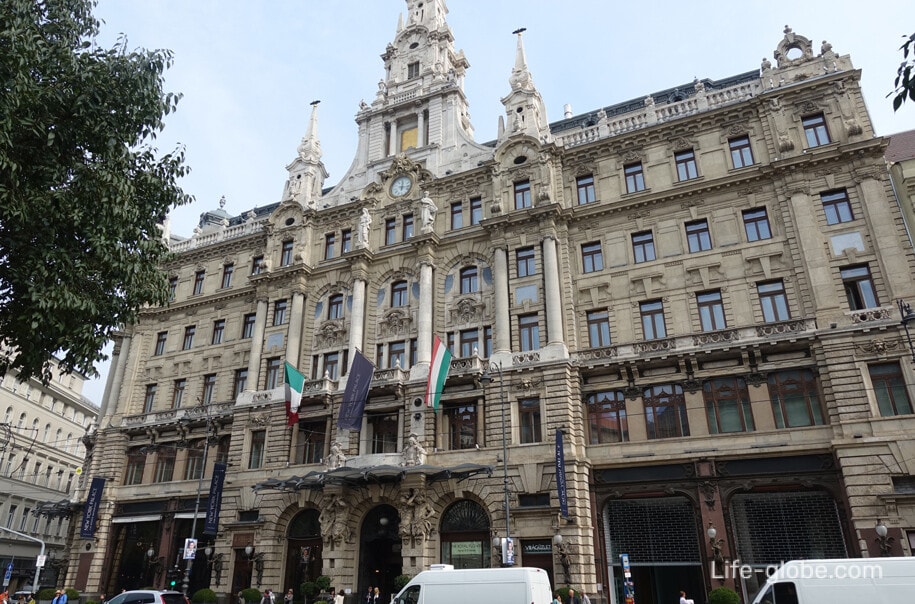
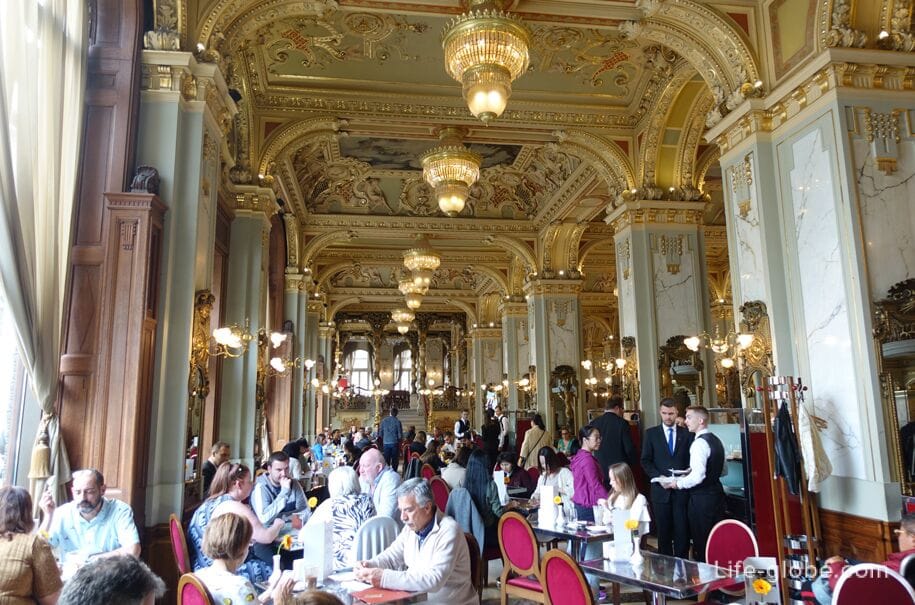
Andrassy Avenue (Andrassy utca) is a main Avenue and one of the main streets (Boulevard) in Budapest.
The Avenue was formed in the period between 1870 - 1876 and named in 1885 after the main supporter of the plan, Prime Minister Gyula Andrassy.
The length of andrássy Avenue is about 2.4 kilometers, it stretches from the Heroes ' square (city Park Városliget-city Park) to the intersection with Bajcsy-Zsilinszky, where smoothly flows into the Jozsef Attila street. Under the prospect passes the metro line M1.
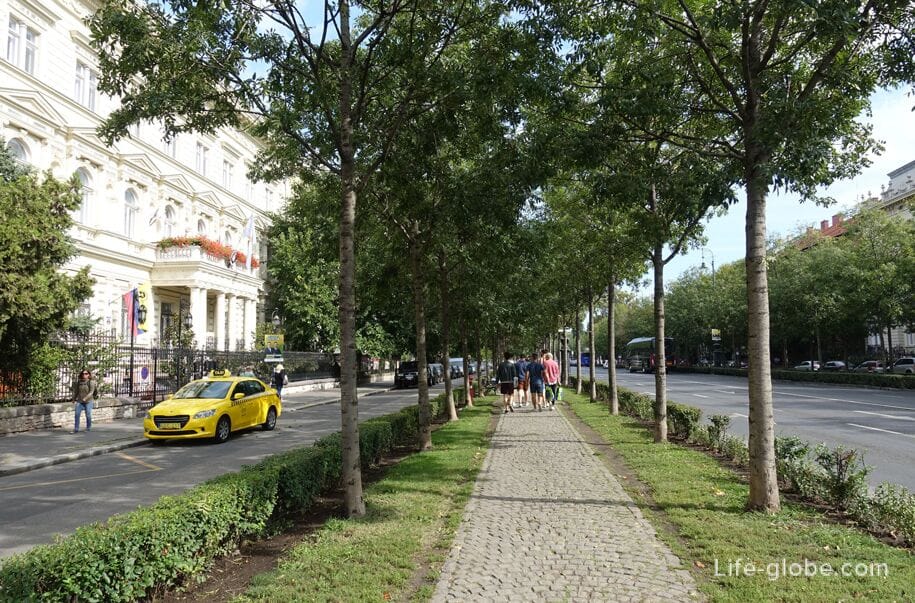
Along the andrássy Avenue are such important sights of Budapest, like:
Hungarian state Opera house (Magyar Allami Operahaz), is a national monument of the 19th century;
- house of Drechsler (Drechsler-palota) is a building in neo - Renaissance style, located opposite the Opera house;
the Paris Department Store (Parisi Nagy Aruhaz, formerly known as: Divatcsarnok), erected in 1882 and rebuilt in 1909 after Samuel Goldberger purchased the building to create within its walls the most modern Department store of its time on the model of French design;
the house - Museum of Terror (Terror Haza Muzeum), which is one of the most visited museums in Budapest, and one of the Tops attractions;
- monuments, other museums and significant buildings. Learn more about Andrassy Avenue...
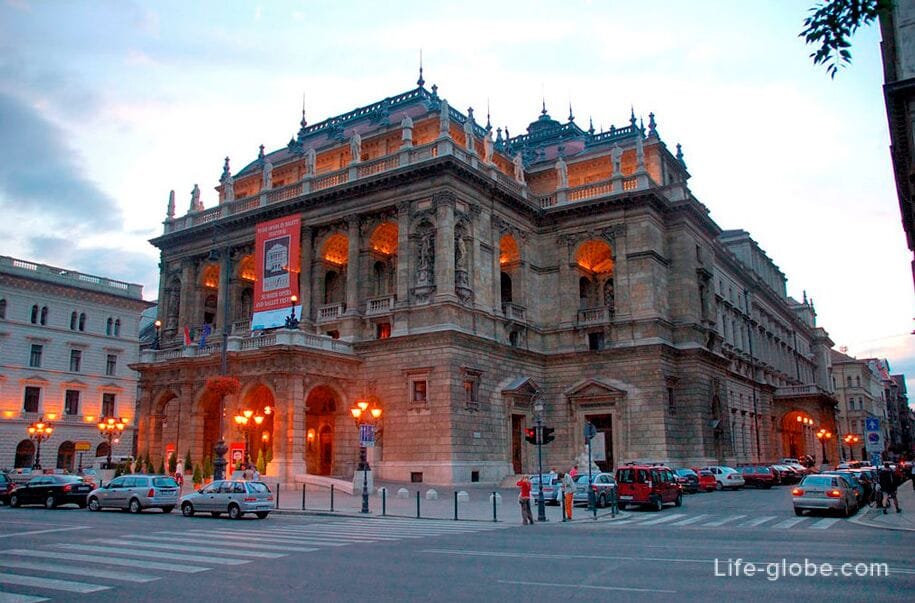
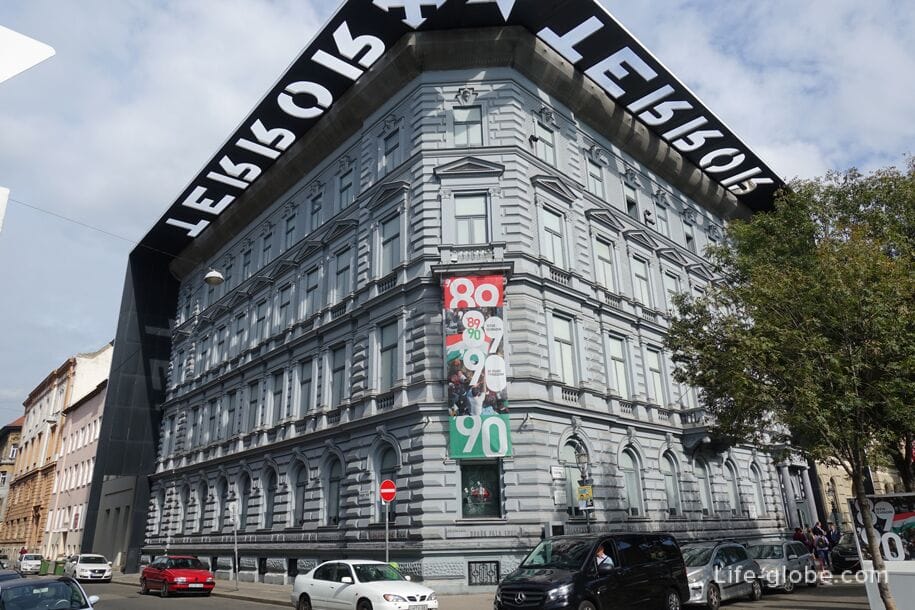
Nagymezo street (Nagymező utca) is a popular tourist destination of Budapest.
The length of the street is around 800 meters, it stretches from the streets of Kiraly (Kiraly) to the street Baiqi-Zhilinskoe (Bajcsy-Zsilinszky).
Along the street there are houses 19th and early 20th centuries.
Due to the large number of existing theatres, located along the unextended segment of the street, namely, from the intersection with Mosser (Mozsar) and to the intersection with Andrassy Avenue, the segment, with a length of only 120 meters, often called the "pest Broadway" ("Pest Broadway") or the "Budapest Broadway" and even street theatre.
This section of the street is not only the most beautiful and elegant part of the street Nagymezo, but also one of the most beautiful places in Budapest. Read more about the "pest Broadway" - street Nagymezo...
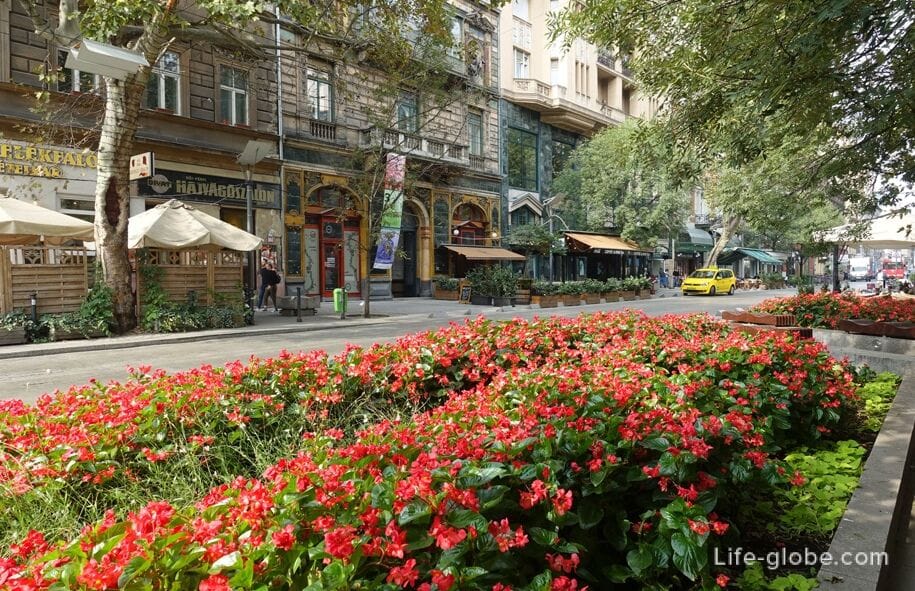
Heroes ' square (Hősök tere) is one of the most important, the largest and most visited areas of Budapest.
Heroes ' square is geographically included in the boundaries of the Park Városliget and is considered its main entrance.
The square was formed for the celebration of the Millennium of Hungary. It was then the monument to the Millennium, which is the main decoration of the square.
Currently, the square hosts concerts, festivals and other events, and on both sides of the center square museums: the Museum of fine arts and Palace of arts, the so-called Mucsarnok. Read more about Heroes ' square...
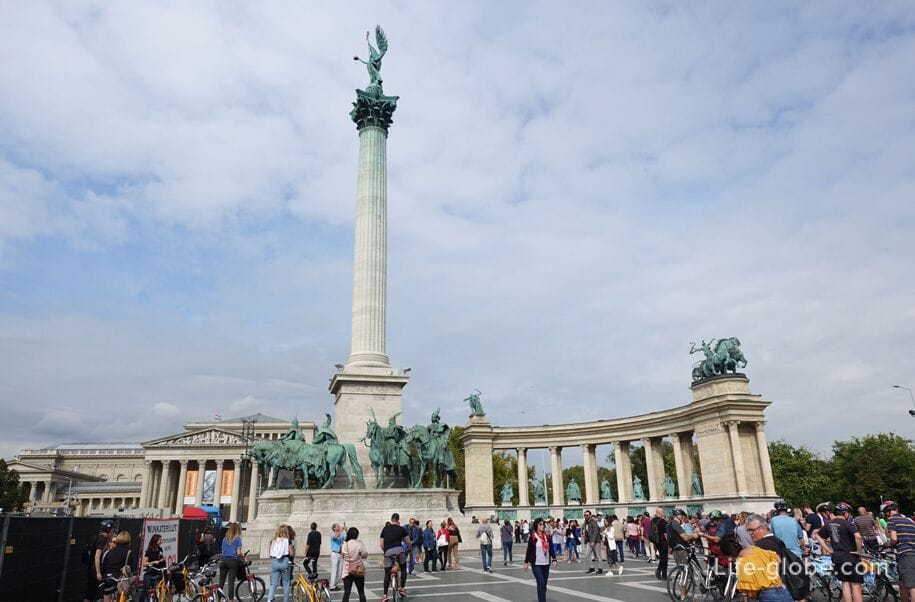
Park Városliget-city Park (Varosliget, which means "city Park", "urban grove") is one of the most important, the largest and most visited (the second Park of the Margaret island) parks in Budapest.
The Park was created beginning in 1751 and was one of the main places for the celebration of the Millennium of Hungary in 1896.
The Park is notable for:
- an artificial lake, which is spanned by several bridges. Along the lake are equipped with places for rest and walks, and in the lake there are a couple of small fountains. In summer lake can go boating or catamaran, and in winter an outdoor skating rink;
- Vajdahunyad castle (Vajdahunyad vara), which is called the most romantic and one of the most beautiful castles in Budapest. The castle is a complex consisting of a group of buildings and objects of architectural combines some of the best buildings of the historical Hungary into a single eclectic Palace;
- the Budapest zoo and Botanical garden (Fővarosi Allat - es Növenykert), which is the oldest zoo in Hungary and one of the oldest in the world. The zoo has over 1000 animals including elephants and white rhinos and around 2,000 plants from around the world;
- Szechenyi thermal bath (Szechenyi fürdő / Szechenyi Gyogyfürdő es Uszoda) - thermal (medicinal) baths and pool, the largest thermal baths not only Budapest, but all over Europe. Read more about the Park Városliget-city Park...
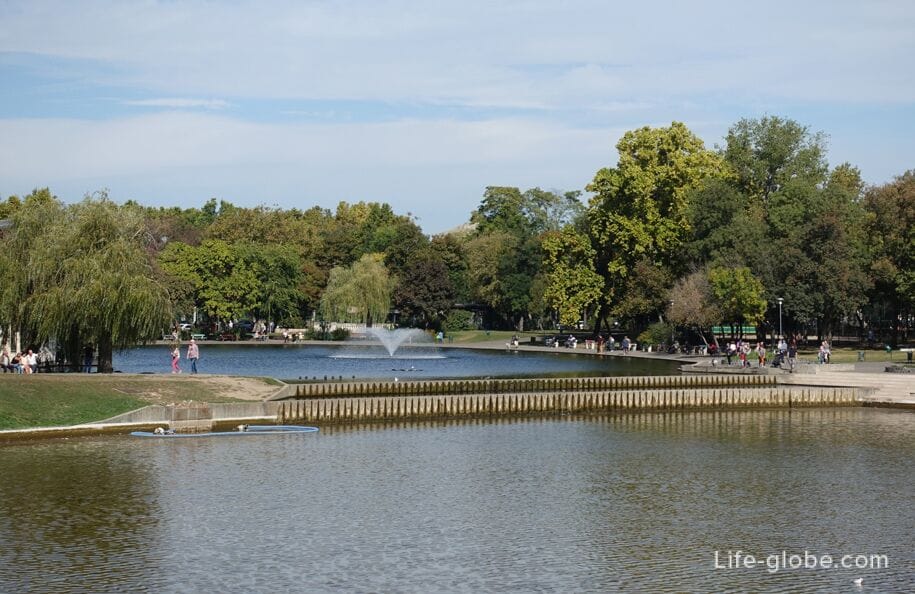
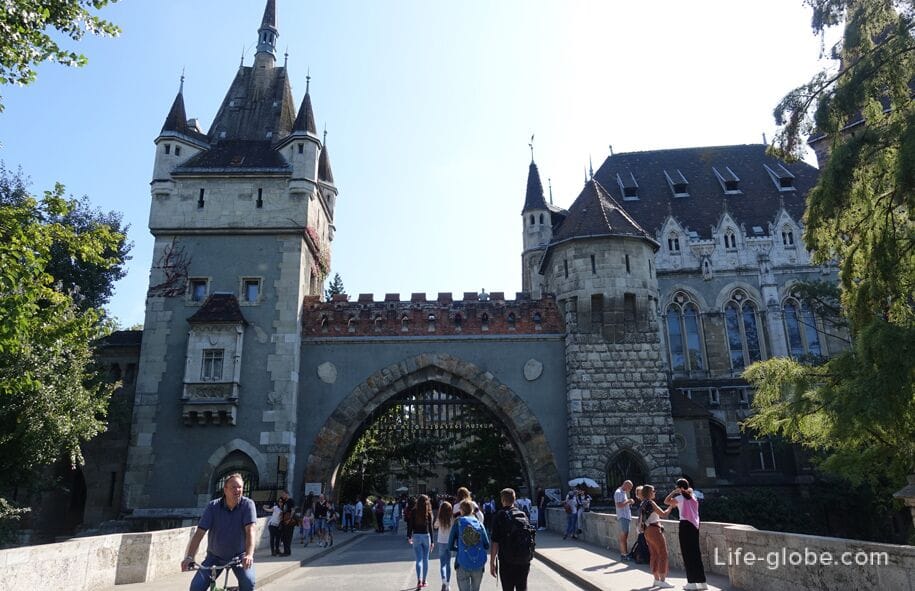
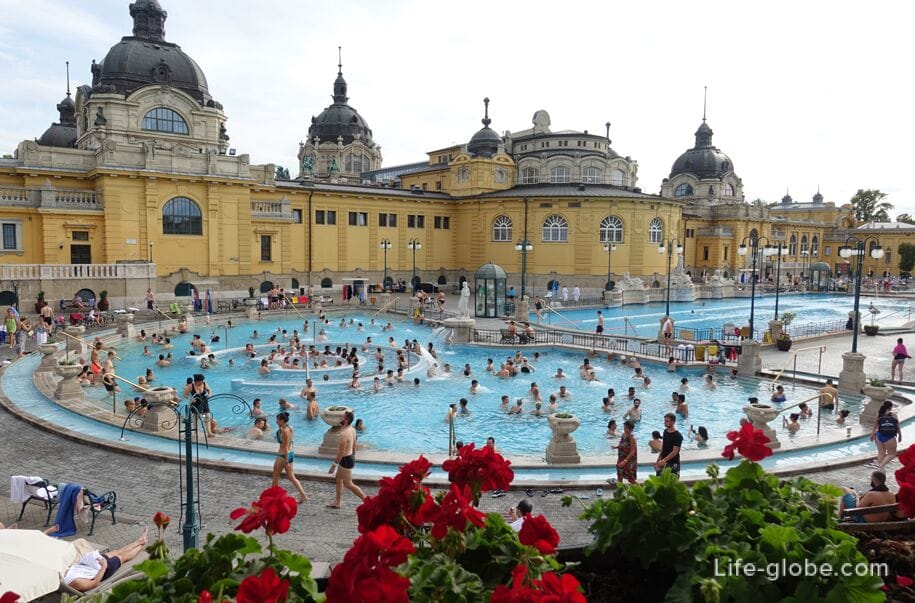
Postal Museum (Postamuzeum), which gathered within its walls exhibits on the history of mail and telecommunications, is located in a historic building at the address: Benczur u. 27.
Museum website: postamuzeum.
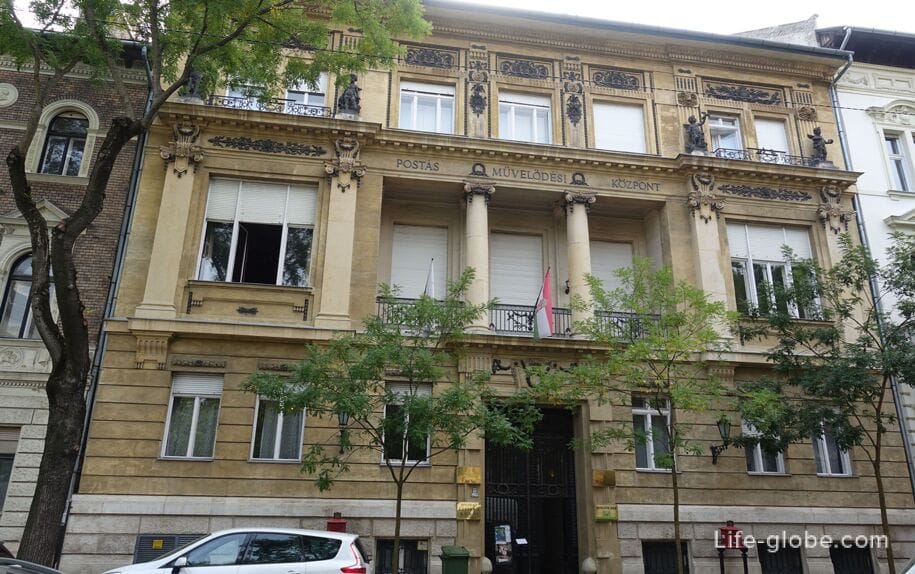
The Hungarian national Museum (Magyar Nemzeti Muzeum) is one of the main mezei of Budapest, is a historical Museum, which collects objects, including relics and historical artifacts telling about the history, development and art of Budapest and Hungary in General.
The Museum building was built in neo-classical style between 1837 and 1847 years by the architect mihály Pollack, and its founder was count Ferenc section.
Address: Muzeum krt. 14-16.
Museum website: mnm.hu.
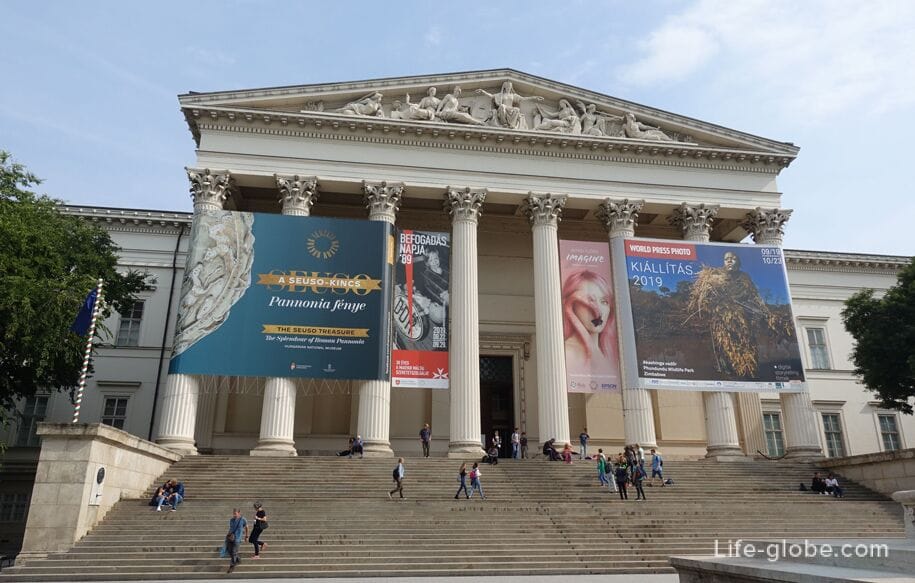
Terem Budapest (MESZ Kos Karoly Terem Budapest) - interesting building in the yard (garden) which is a cafe.
Address: Ötpacsirta u. 2.
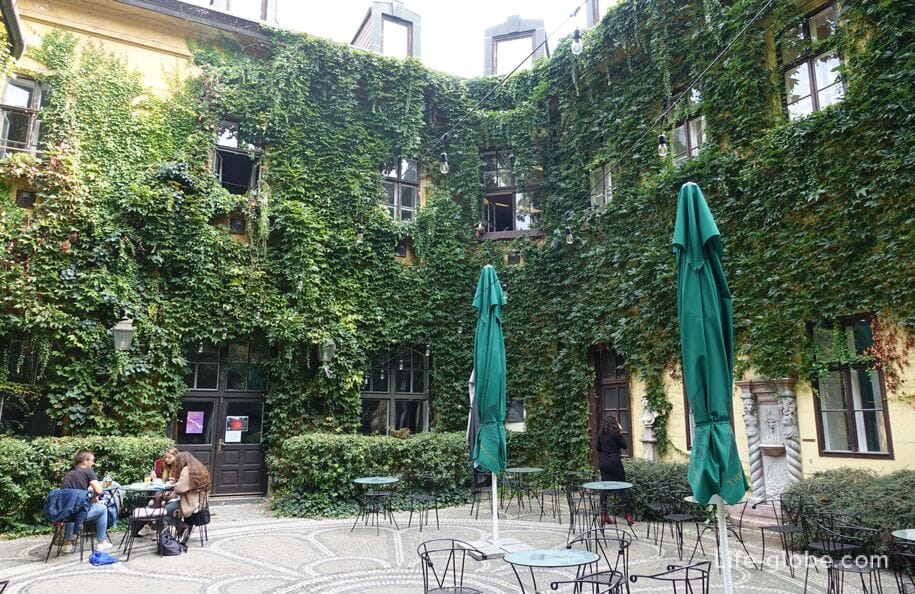
Catholic University Peter Pazmany (Pazmany Peter Katolikus Egyetem) was founded in 1635, is named after its founder, cardinal Peter Pazmany and also known as Tasmanian.
In pest it is noteworthy historic University building, located at Szentkiralyi u. 28.
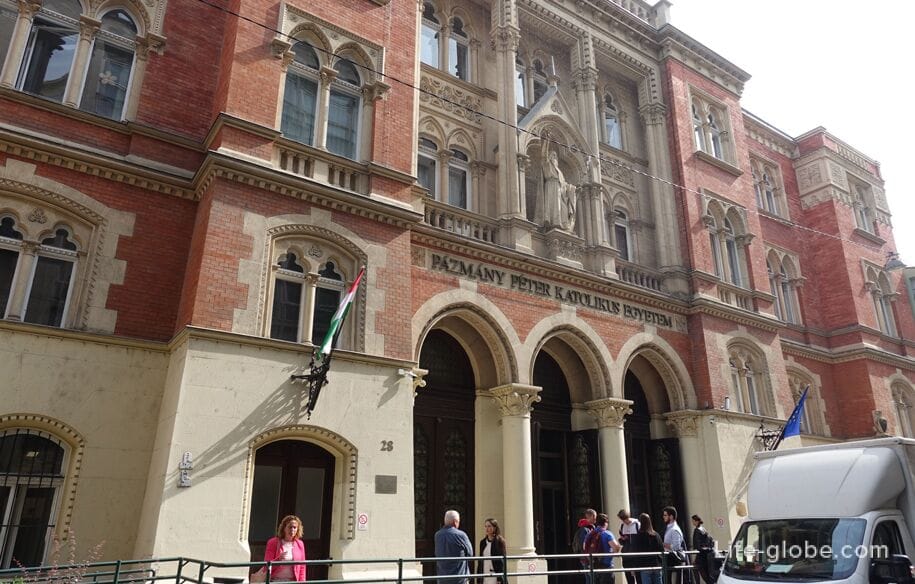
Library of clogs ARVENA is the largest library network in Budapest.
The main branch of the library of the Metropolitan Ervin Szabo (Szabo Ervin Fővarosi Könyvtar) is located in a beautiful neo-Baroque Palace Winchime of the 19th century, a national monument, at Szabo Ervin ter 1.
Near the Central facade of the library building is a memorial Park with a fountain.
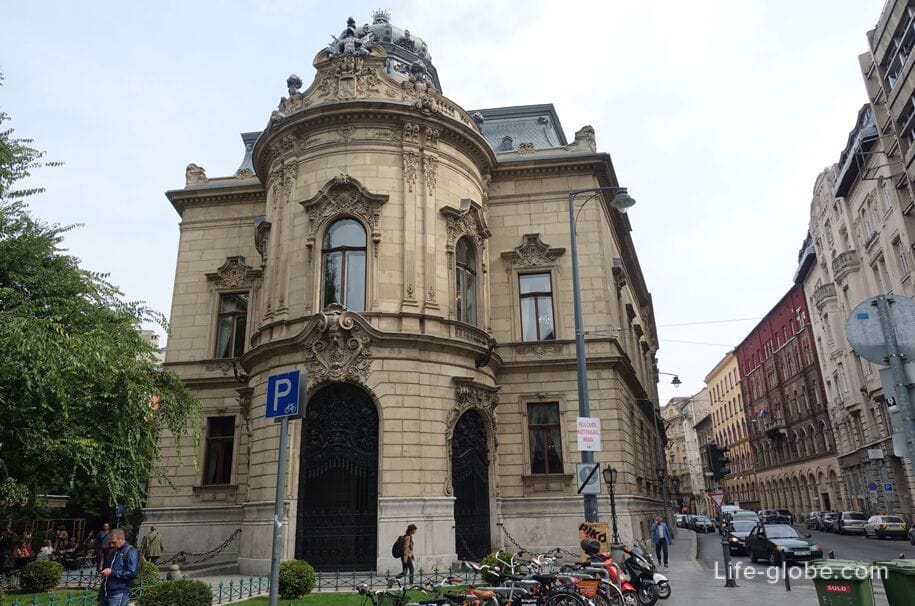
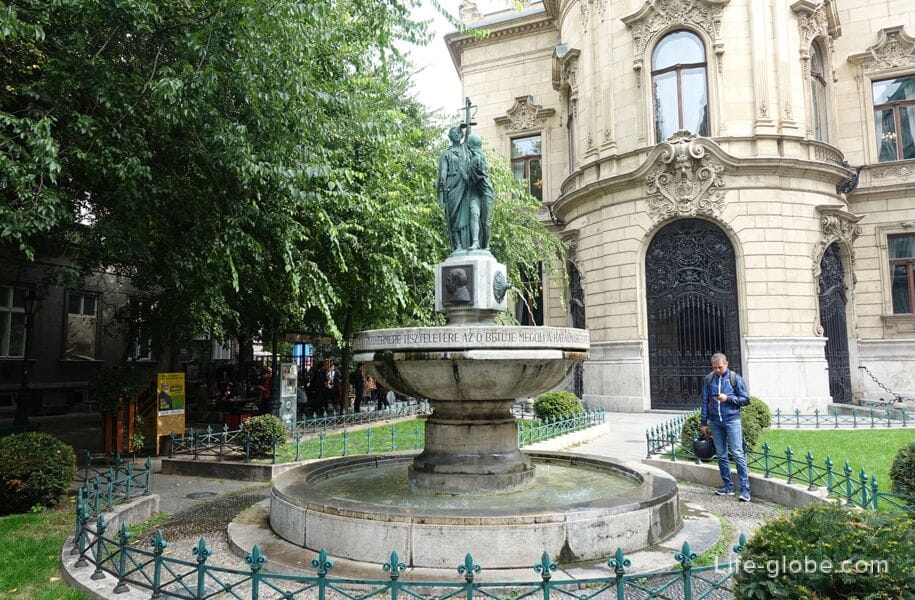
The Church of Calvin (Kalvin teri reformatus templom) is the largest reformed Church in Budapest and the second largest Protestant Church in the capital of Hungary after the Lutheran Church on deák square.
The Church was built in neoclassical style between 1816 and 1830. The architectural curiosity of the Church is that it was originally designed with two towers that never was finally erected. And now, on the inner edge of the base of the two towers rests the sole and the Central tower of the Shrine.
The address of the Church: Kalvin ter 7.
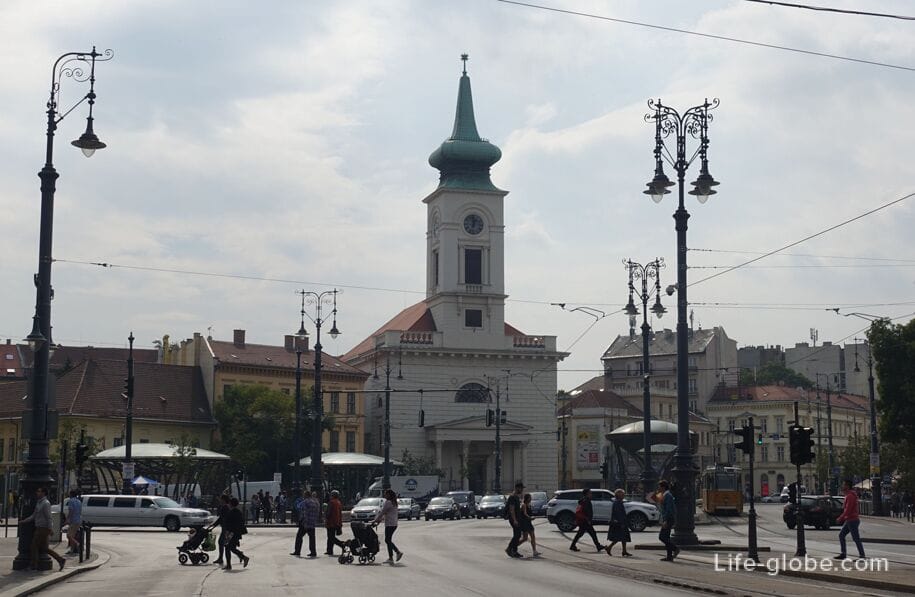
Budapest Catholic heart of Jesus Church or Church of the sacred Heart (Budapesti Jezus Szive Templom) is located at the address: Maria u. 25.
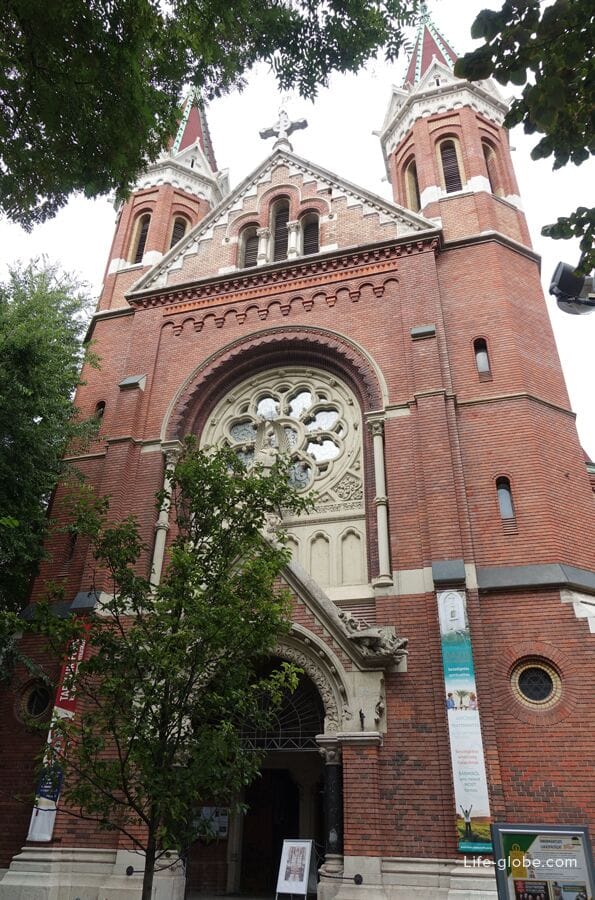
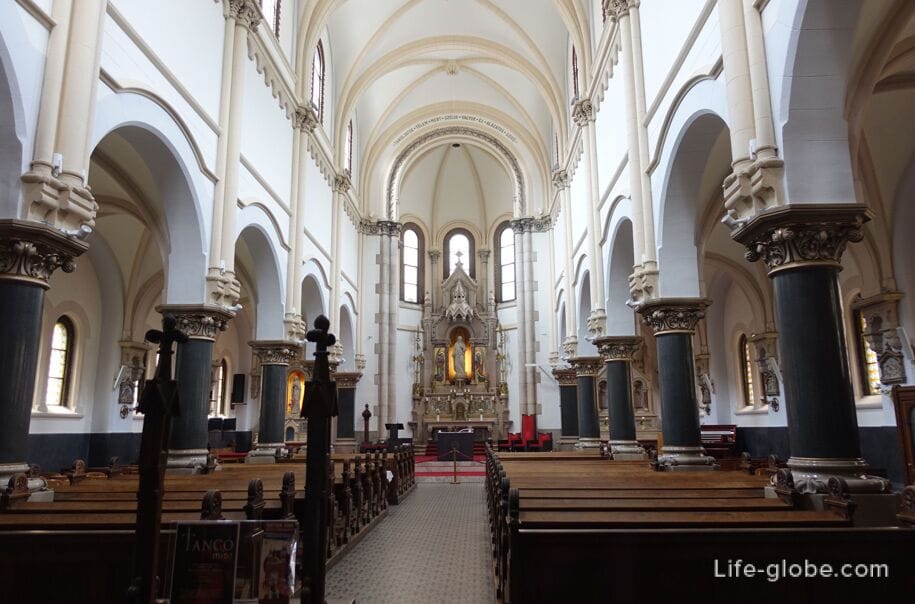
Museum of applied arts (Iparműveszeti Muzeum) is located in one of the most impressive buildings in the city, the architecture of which is particularly remarkable roof, tiled Zsolnay emerald color.
The building in the secession style was built in the years 1893-1896.
Currently, the Museum of applied art is the leading collectible and exhibition centre of the Hungarian and international, historic and contemporary applied art and design in Hungary. It has a rich collection, with such exhibits as the collection of glass and ceramics in the art Nouveau style or collection, of Islamic-Turkish carpets of the world quality, makes this Museum one of the most important museums of this kind in Europe.
Address: 33-37 Üllői ut.
Museum website: imm.
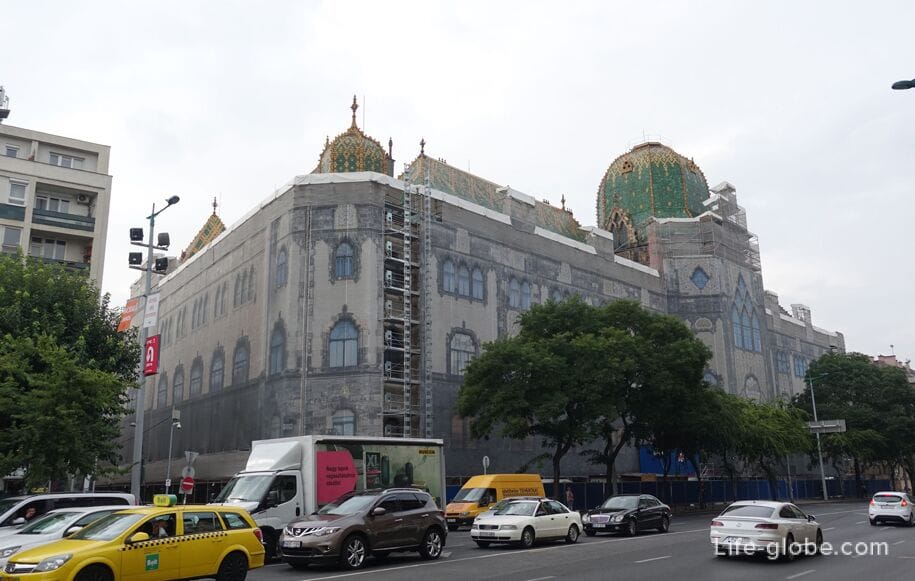
Holocaust memorial center (Holocaust Memorial Center) and the Hungarian Museum of natural Sciences (Magyar Termeszettudomanyi Muzeum) located close to each other (the distance between the museums is just over a kilometer), in the southern end of the tourist centre of pest.
The sculpture is Colombo (Columbo-decent example), depicted with a pensive look and is clearly something investigating at the end of the street max Falk (Falk Miksa u).
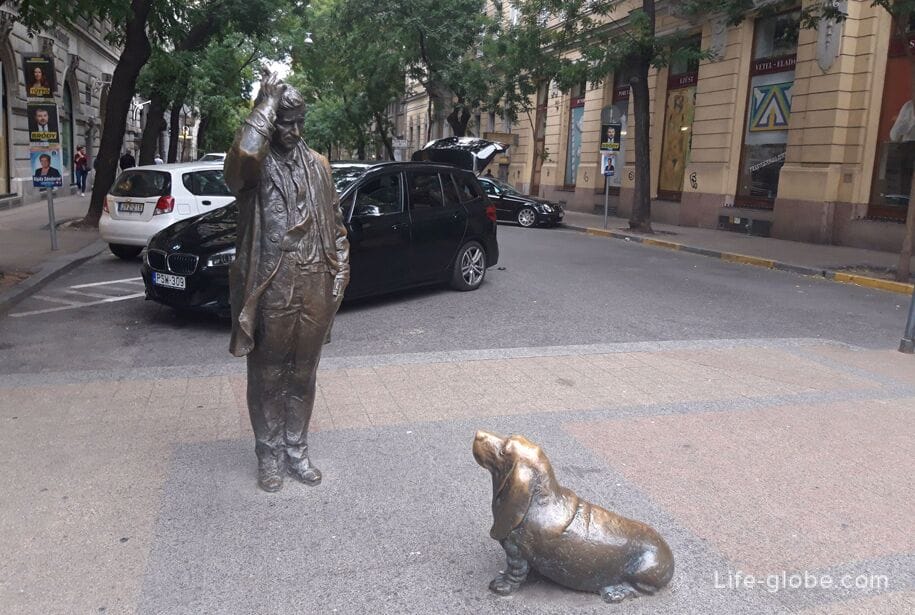
The Comedy theatre (Vigszinhaz) - drama theatre of Budapest, is one of the popular theatres of the city, with three playgrounds and is based on the turn of 19-20 centuries.
The building of the Budapest Comedy theatre was designed by Austrian architectural Bureau "Fellner and Helmer". The erection of the building in the style of neo-Baroque was begun in 1895 and completed may 1, 1896.
Theatre address: Szent Istvan krt. 14.
The website of the theatre: vigszinhaz.
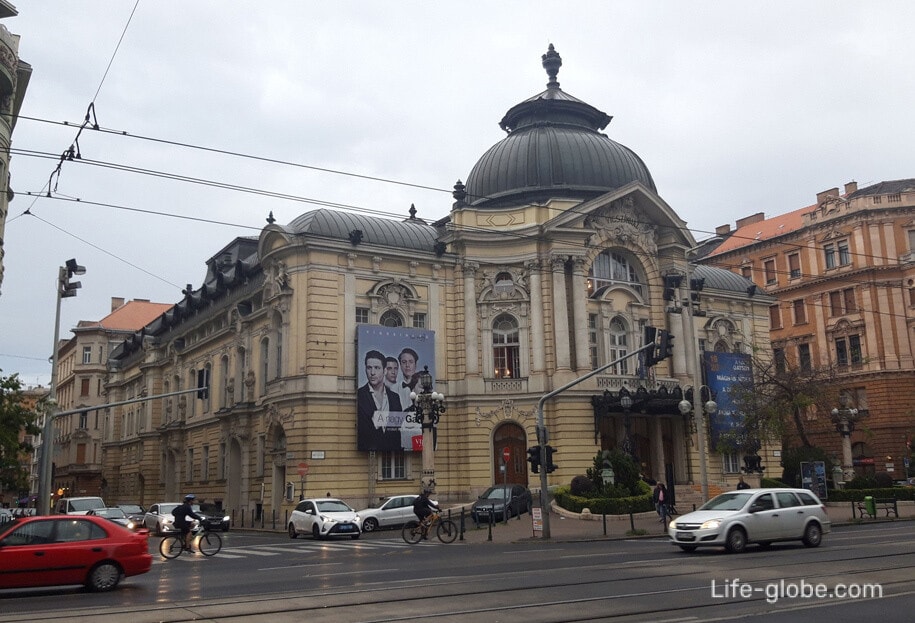
Train station Budapest-Nyugati ("Western station" / Budapest-Nyugati) is one of the three main railway terminals in Budapest (the other two are Keleti and deli), as performing their primary function, but also the building of the station is a historical site and tourist attraction.
The station was designed by August de Serres and built by Eiffel & Cie, instead of the older station had already not meeting the increased requirements of the city. The new station was opened on 28 October 1877.
This architectural beauty of the 19th century is a complex of stone, steel and glass, which is more like some eccentric Palace than a station.
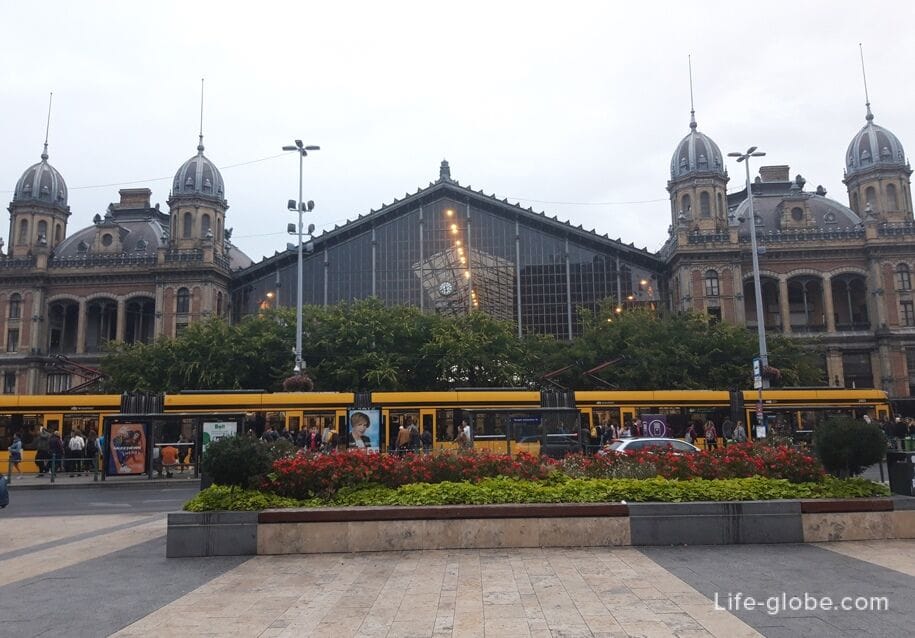
Two majestic buildings of courts: Central district court of pest (Pesti Központi Kerületi Birosag) and the Metropolitan court of Budapest (Budapest Fővarosi Itelőtabla Marko utca) located opposite each other on the street: Marco 25 and 16 (Marko u).

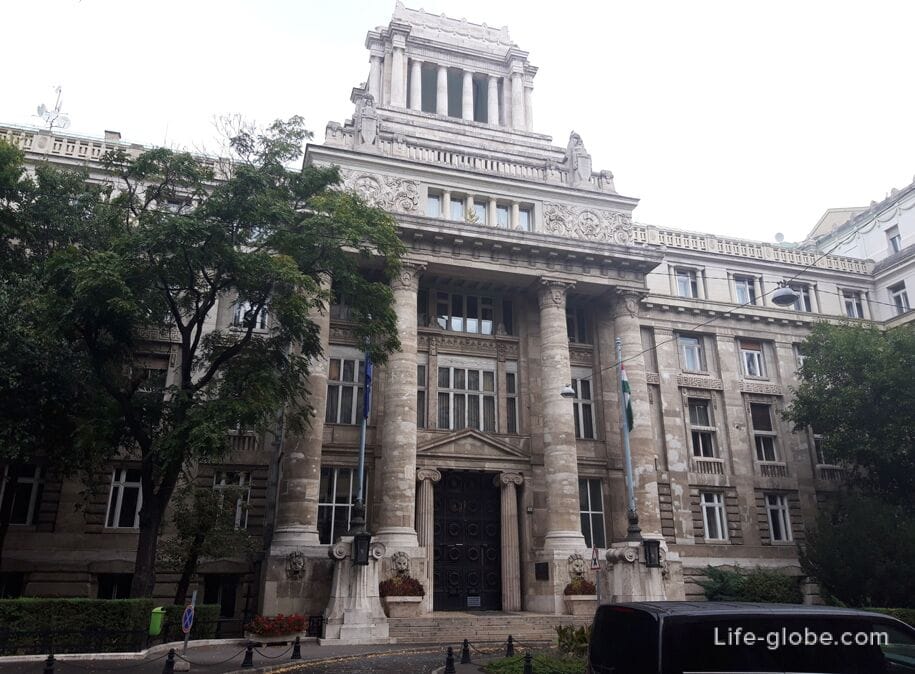
Unitarian universalist Church and the headquarters (Budapesti Unitarius Templom) - the headquarters, which also serves as the Episcopal Palace, built between 1888 and 1890.
The building structure also includes the Church and the office of the unitary ward of Budapest. The Church was consecrated October 26, 1890.
Address: Nagy Ignac u. 2-4.

A small parish in the German-speaking reformed Church (Reformatus Budapesti Nemetajku) is located at the address: Hold u. 18-20.

Park the history of Hungarian Railways (Magyar Vasuttörteneti Park) - the Museum under the open sky, clearly tells the history of the development of the Hungarian railway.
The Museum features old locomotives, rail vehicle, rail car "the Seagull", a dining car from teak wood, which was operated on the Orient Express, cars of special importance in the history of Hungarian and international rail traffic.
In addition, the Museum created an exhibition of miniatures, you can ride on an old steam train, locomotive, rail car, trolley or a small kiddie train.
Address of the Park/Museum: Tatai u. 95 (coordinates: 47°32'32.3"N 19°05'44.1"E).
The website of the Park/Museum: vasuttortenetipark.
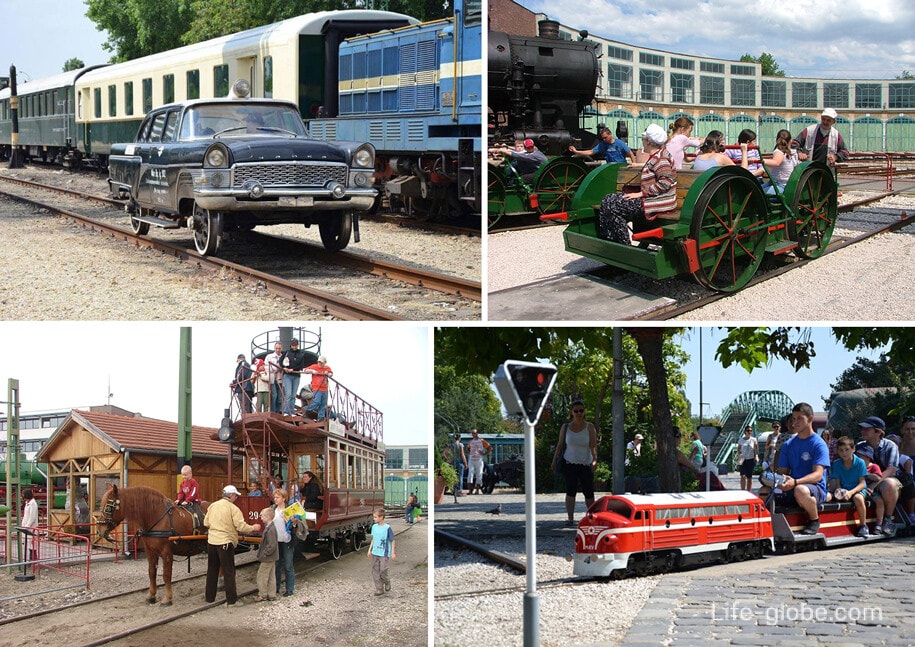
Waterpark Aquaworld (AquaWorld) is the largest water entertainment area of Hungary, with both indoor (year-round) and outdoor (from may to October) areas, which are: 4-star resort hotel Aquaworld Resort Budapest is a Spa and fitness center, with swimming pool with thermal water, sauna, Hammam and gym.
Address of Park: Ives ut 16 (the Park is located on the Northern outskirts of the pest side).
The website of the Park: aquaworldresort.

